

Sailboat or Catamaran? Here’s How to Decide

There is nothing as magical and mystical as sailing out onto the open sea. You’re in for a realm of a wonderful adventure, beautiful sights, and escaping into the unknown as you relax under the sun. Whether you’re planning a luxurious trip with your loved ones or an exciting, fast-paced adventure, one thing you need to consider is what type of boat to use.
Two popular boats are the sailboat and the catamaran. So how can you decide which one is right for you and the adventure you’re seeking? In deciding between a sailboat and catamaran, there are several considerations to keep in mind. A catamaran is easier to sail and will provide a more spacious and luxurious experience. The sailboat, on the other hand, is more immersed in the water and provides a more realistic and exciting experience.
It can be challenging knowing which boat is right for you. That is why we are going to run down all the basic information and differences between these two boats. Knowing the major differences between the two will help you make the right choice.
The Difference Between a Sailboat and a Catamaran
To the untrained eye, a sailboat and a catamaran might look fairly similar. Therefore, you might think that the overall ride and experience are also the same. However, sailboats and catamarans are profoundly different and offer completely different rides. That is why it is so important to get the facts on these models before gliding them into the water.
The Major Differences Between the Two
Catamarans have become increasingly more popular due to the fact that they have better overall buoyancy than a sailboat, which is also referred to as a monohull . What does that mean for the riders? Well, buoyancy equates to a smoother and more enjoyable ride , which is ideal for those who are seeking a more relaxed experience.
Catamarans are also known for their ease in maneuverability compared so a sailboat. This, again, is ideal for someone who is looking for a relaxed ride, as it is a lot easier to sail than a typical sailboat. This also makes the catamaran a better choice for a newcomer who isn’t confident in his sailing capabilities.
The double engine of a catamaran makes it easier to dock and is also capable of doing a 360-degree turn if needed. Why is this important? Well, anyone who has ever tried to dock a boat knows that it isn’t the simplest task. You will be glad to know that the catamaran can turn more easily and be docked quicker than a sailboat.
However, don’t let these characteristics sway you from ever wanting to try your hand at a sailboat. Sailboats provide a more realistic feeling, which ultimately equates to a more thrilling ride. Anyone who is looking for an adrenaline rush will find that gliding through the water and hanging off the sails is exactly what the doctor prescribed.
Does that mean that monohulls are all about the thrills and excitement? While that’s the main goal, there is still enough room to sit back and relax in the cabin or get a good tan while sunbathing. There is, though, significantly less room, which doesn’t make for quite a luxurious experience overall.
Boat Design
As we mentioned earlier, it can be hard to tell right off the bat what the major differences between a sailboat and a catamaran are. It may be slightly obvious that the catamaran is a bit bigger, but the actual construction is incredibly different.
Sailboats are designed with a single hull as well as a single engine. The one engine will typically combine with a bow thruster, which is located at the front of the boat. If you’re not sure what a bow thruster is, it is essentially this:
- A bow thruster is another small, electric engine located at the front of the boat. The main purpose of the bow thruster is to enable the yacht to move sideways simply by pressing a button. This makes it easier for the skipper (or person who is driving the boat) to maneuver through tighter areas, thus making the boat more secure.
On the other hand, a catamaran is designed with two hulls and two engines. The major benefit of having two engines onboard is that if one engine fails, then the other engine can keep the boat moving and help make its way back to the docking station. This provides more ease of mind for the skipper as well as the riders, making for a more relaxed and confident ride.
Aside from giving the riders peace of mind, double engines also work to ensure that there is greater maneuverability in the water. With two engines, the skipper is able to rotate the boat in an incredible 360-degree motion. With that type of capability, the catamaran is able to maneuver through even tighter spaces, which makes docking a breeze.
Space Differences
When it comes to overall spaciousness, the catamaran beats the competition. In fact, this is one of the major reasons why people choose to go with the catamaran: for space it provides.
This means that even though the catamaran and the sailboat might appear to be the same size, the catamaran actually has a larger cabin and salon area, with more room for sunbathing and other outdoor activities.
A lot of catamarans will also offer a large-sized net area located on the bow of the boat. This net area is available for the riders to lay back and relax, which is ultimately an incredibly unique experience you won’t find on a sailboat. The net is ideal for soaking up the sun when anchored on your favorite, most beautiful bay.
A large cockpit area is another benefit of choosing a catamaran. This is because the massive amounts of space ensure you can do just about anything in the cockpit, like hosting a large family dinner or even setting up a party space to get wild for your birthday.
For anyone who is looking for a relaxed, comfortable, and spacious experience out on the sea, the catamaran will be the best choice. On the other hand, those who want more thrills and aren’t overly concerned about room for dinners and parties should consider the exciting monohull sailboat.
Comfort and Stability
Another great benefit of choosing a catamaran is the comfort and stability they provide. Think about it: since the Catamaran is designed with two parallel hulls rather than just one, there is far more stability all around the boat. This means you can take a walk around the yacht, make your favorite meals for the family, or shake up some drinks in the cabin without worrying about anything tipping over (including yourself).
One of the other features you will only find on (most) catamarans is the inclusion of a separate flybridge. What does this unique piece of equipment do? Well, it provides the riders with a shaded area where they can take a break from the heat of the sun while enjoying a drink and d’Oeuvres.
The flybridge also makes sure that there is privacy on the boat, which is something you won’t find in a smaller, less roomy, and comfortable sailboat.
Sailing Experience
The main reason why multihulls, otherwise known as catamarans, are so extensively popular is due to the fact that they offer such a comfortable and luxurious experience . This means that the riders are reaching maximum pleasure while vacationing out at sea. However, there doesn’t mean that there are not any downsides to this model.
The major downside to catamarans is that they can sometimes pound and slap in the water. To put it simply, this is an incredibly annoying sound that can almost sound like the boat is being beaten and battered by the ocean, ultimately breaking into pieces. While this is certainly not the case, it sure sounds like it; and that is something nobody wants to hear.
So why does the catamaran have this sensation while monohull sailboats do not? The slapping and pounding noise coming from the boat is due to the fact that the low bridge clearance gets hit by the water when the sea is bumpy, and the boat is heading upwind.
Sailboats are able to cut through bumpy seas with ease and can handle wins extremely well. This is due to the fact that they are more immersed in the water. Catamarans, on the other hand, glide over the water rather than sailing through it. This is why they tend to be more smooth overall, but can’t handle winds or lumpy seas as well.
Another thing to keep in mind is that catamarans have less of a heel while sailing. In fact, a catamaran will rarely ever heel more than 5 to 10 degrees before you need to reef the boat. What does this mean for the riders? A smoother sail.
A sailboat, on the other hand, can heel over 20 degrees. The riders will need to brace themselves in the cockpit, so they don’t go falling over to the side. This is especially true when you are outside on a sailboat, as you don’t want to fall completely off the boat when it begins to heel dramatically.
Which One is Faster?
You might think that because the monohull sailboat is less spacious and cuts through the water that it will be faster. Well, thank again. Catamarans are ultimately faster than their monohull sailboat counterparts. But why?
The answer is simple: The two hulls are less immersed in the water. This is beneficial for the simple fact that the hulls won’t have any chance of being ‘dragged’ in the sea. Together, the double hulls stabilize the boat and won’t be challenged by waters, even when they might are choppy.
Aside from being faster overall, the quickness seems to be even more noticeable when the catamaran is sailing downwind. This, again, is because the catamaran’s hulls are not immersed in the water and therefore have no pull when it comes to the water. Gliding downwind creates an even faster movement.
Does that mean that they are slower when cruising windward? Not at all! Although it won’t be as fast as going downwind, the catamaran still beats the sailboat in terms of speed.
Price Differences
When you narrow down the differences by pricing, the differences are subtle. In fact, if there is plenty of supply of both boats, then you can expect the price of a sailboat to be around the same price as a catamaran. But which one is generally more expensive?
Well, since the catamaran has two hulls rather than a single hull, they are naturally going to be sold at a higher cost. Even though the price may not be overly significant, catamarans will generally be pricier than a sailboat.
Aside from the cost of the boat, you must also consider how much it will cost to dock it. Since the catamaran requires more space than a sailboat, it will be more expensive to dock it in a marina. The prices may be even steeper when you’re trying to dock your boat during peak seasons when space is limited.
Overall Emotion Onboard
This might not seem like something to consider when describing the difference between a catamaran and a sailboat, but each comes with their own emotions. Everyone who decides to set sail is looking for some type of experience, and these boats have two very distinct different emotions attached to them.
A catamaran is going to give you the utmost pleasure and relaxation. If you’re looking to release some negative thoughts and emotions and regroup, then this is going to be the best boat.
On the other hand, riding in a sailboat will deliver an experience like you will never have again. There is something about whipping through the sea, feeling the wind blowing against your face, and hanging onto the heel that will give you a rush and exciting experience you will remember for years to come.
Is One Safer than the Other?
This is a loaded question, as someone who has plenty of experience sailing and riding on boats won’t have trouble with either type of boat. However, it is fair to say that catamarans are generally safer than sailboats. But why?
- Less heel means less chances of getting hurt or falling off. With little to no chance of the boat heeling, you can ride without thinking about falling over and hurting yourself or ending up completely hauled off the yacht.
- Double hulls provide stability. This makes it easy for the riders to walk around the boat, lay down and sunbathe, or enjoy a meal in the cockpit without anything negative happening.
- Level sailing means less chances of tipping over. Sailboats can sometimes tip over in harsh weather conditions. The good thing about a catamaran is the double hulls, and level sailing capabilities keep everyone onboard and keeps the yacht from tipping over.
- Catamarans will float no matter what. In the extremely rare instance where a catamaran flips over or something has broken the boat and you fear sinking, put your worries to rest as catamarans will always keep afloat whether they are upright or not. This is because catamarans have excessive buoyancy.
Choosing the Right Boat
Now that you know all of the major differences between a catamaran and a sailboat, the decision should be exponentially easier. Just keep these few things in mind when picking the boat that is right for you:
- Are you looking for comfort and luxury, or thrills and experience? Remember that the catamaran is all about luxury and comfort. It’s great for families, especially those with kids, because of the stability. On the other hand, those seeking a pulse-racing experience should acquire a sailboat.
- How much room do you need? If it is just you and your buddy looking for a great time, then you might consider a sailboat. Someone looking for a fun family outing or even planning to throw a party of some sort should look into the spacious, more comfortable, and roomy catamaran.
- How good are your sailing abilities? Catamarans are great for beginners as they are far easier to sail and maneuver through the water. If you’re worried about your skill level, catamaran might be the best choice.
- How much money are you looking to spend? While you don’t have to worry too much about pricing, you should know that catamarans will be a bit more expensive due to double hulls and space. This is also true while docking, as catamarans, will require more room.
Choosing between a catamaran and sailboat can be tricky if you don’t know all of the facts. The best things to keep in mind is that a catamaran is the yacht that will provide more overall luxury and space, while the sailboat will ensure bone-chilling, heart-racing thrills that will give you a story to talk about for the rest of your life.
I am the owner of sailoradvice. I live in Birmingham, UK and love to sail with my wife and three boys throughout the year.
Recent Posts
How To Sail From The Great Lakes To The Ocean
It’s a feat in and of itself to sail to the Great Lakes. Now you want to take it one step further and reach the ocean, notably, the Atlantic Ocean. How do you chart a sailing course to get to the...
Can You Sail from the Great Lakes to the Gulf of Mexico by Boat? 
You have years of boating experience and consider yourself quite an accomplished sailor. Lately, you’ve been interested in challenging yourself and traveling greater distances than ever before. If...

Catamaran VS Sailboat, 9 Important Differences You Should Know!
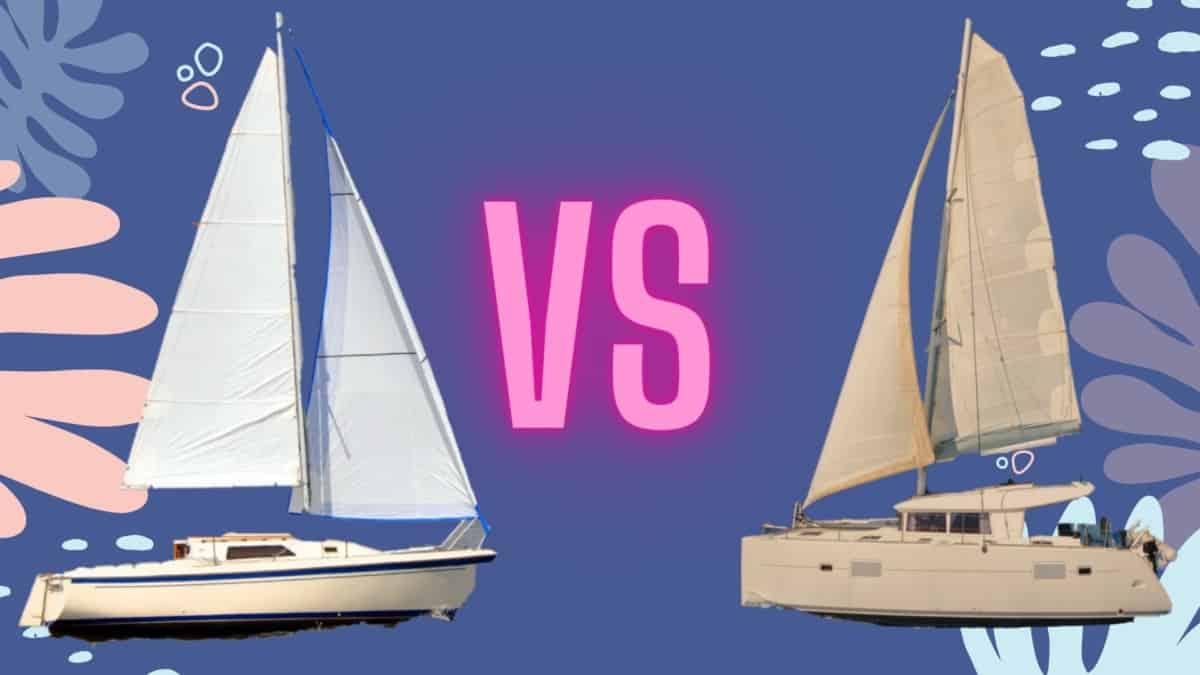
As an Amazon Associate, we earn from qualifying purchases. We may also earn commissions if you purchase products from other retailers after clicking on a link from our site.
This is one of the never-ending questions out there, catamarans vs. monohulls (also known by some just as sailboats). The discussions are wild and are, many times, really hard to follow unless you’re already a vivid sailor. By then, you probably already have your own opinion on what the differences are.
In this post, I’m trying to take a little more pragmatic approach to describe the 9 most important differences that I think you should know about.
Table of Contents
1. Catamarans Have Two Hulls, Sailboats or Monohulls Have One
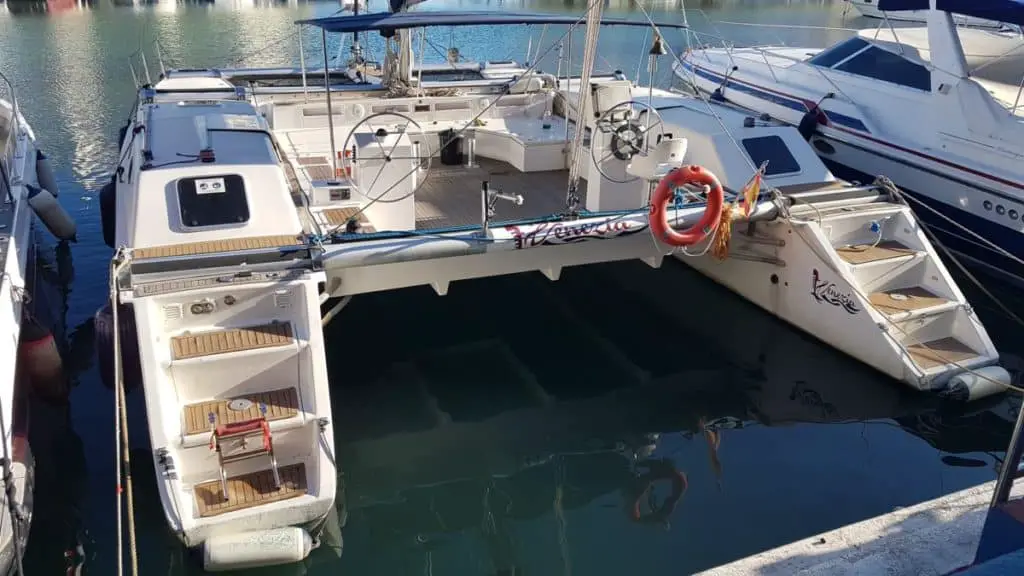
This is the most apparent feature that strikes you when you look at the two boats next to each other; one has two hulls, and the other only one. Mono, as you might know, means one (1).
Having two hulls also implies you need something that connects them, making the boat look a little bit like a manta ray, or is that only me?
2. Monohulls Will Rock From Side to Side
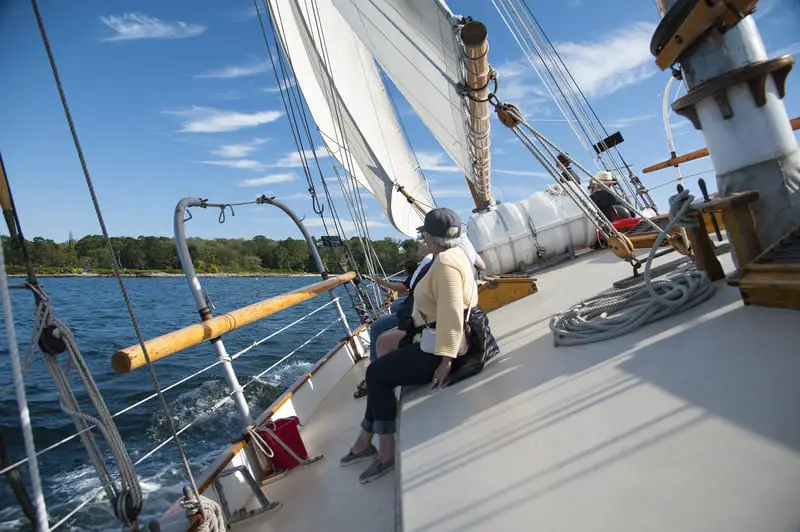
Catamarans don’t heel (leaning to its side in boat language). Therefore, they offer a very different sailing experience, which is more stable and usually more comfortable; this also applies when staying at anchor. The catamaran will move around with the wind, always staying flat, while the sailboat will rock from side to side and might even get you seasick .
This is especially noticeable when the wind is opposing the waves, making the boat have the wind pushing it from one side and the waves banging it from the other side. This makes for a very uncomfortable anchorage on a monohull. Basically, you are the iron, and the wind and wave are your hammer and anvil, not a perfect place to be.
3. Catamarans Offer More Space for the Same Length
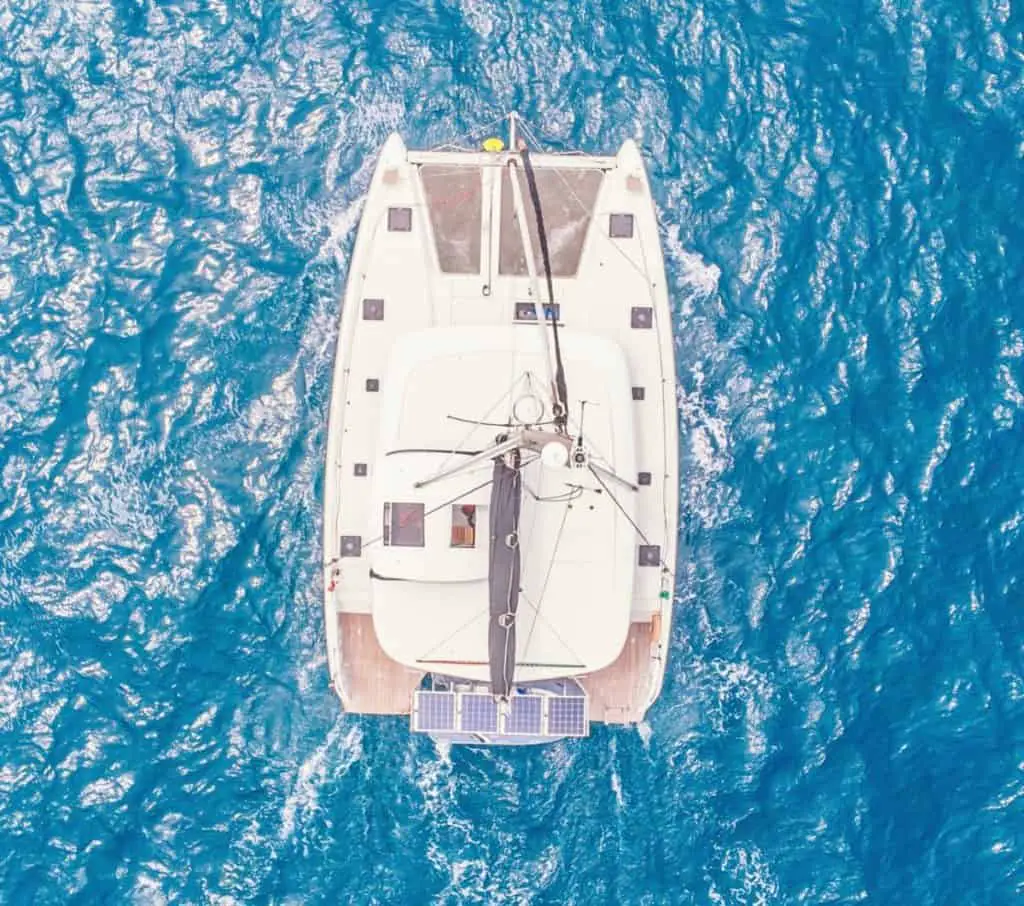
For the same length of boat, let’s say 40ft, you’re getting a lot more space on a catamaran. This is due to the two hulls, but also the big deck that attaches the hulls. There will also be even more space on the outside of the boat, both fore and aft of the mast. In between the bows, you will have either a solid deck or trampolines , which will greatly increase the space.
4. Catamarans Make Horrible Noises While Sailing Upwind
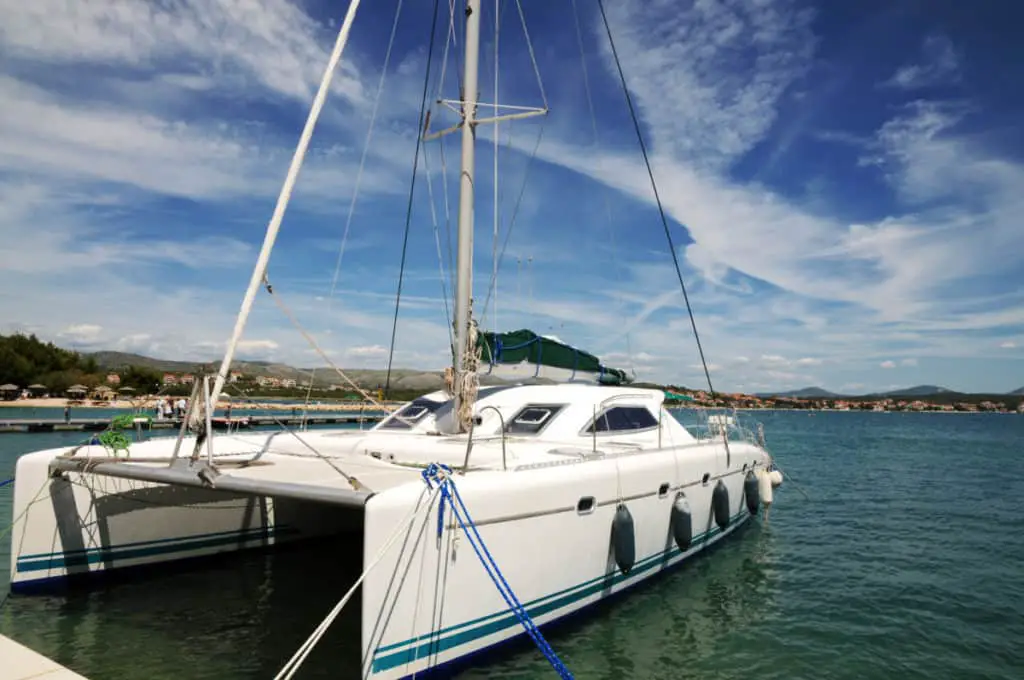
The distance between the water surface and the deck’s underside is called bridge deck clearance ; if it is not big enough, even small waves will start smashing into the underside.
This repeated cycle of waves hitting the boat does induce not only great noise but also a lot of vibrations and discomfort to the crew.
This problem is something that just doesn’t exist on monohulls (only one hull) and also is a strong argument from those who prefer monohulls.
The noise might not be a big deal when traveling coastal waters for a few hours a day, but consider going days on end straight into the wind, hearing that banging noise, ad a little motion sickness, and you will pretty soon wish you were on a monohull 🙂
5. Monohulls Are Slower Than Catamarans
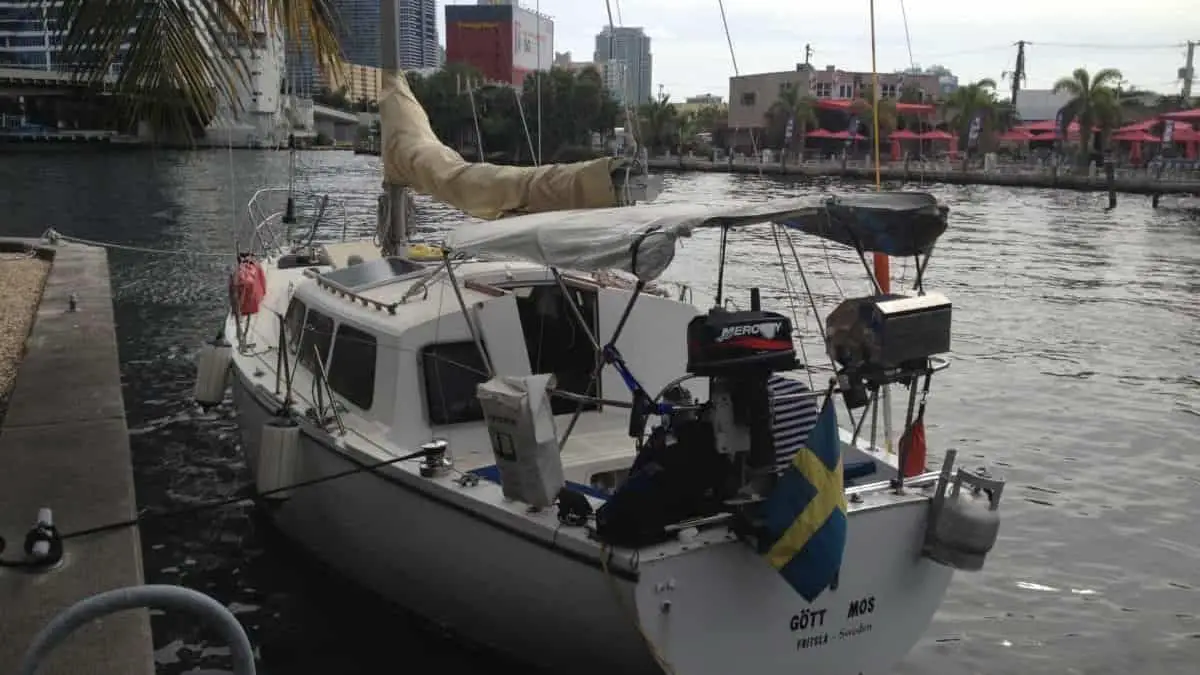
At least that is the short answer, this applies if we only compare the length of the boat, but if we compare the total length in the water, it’s a different story. Much of this speed comes from the decreased drag, bigger sails, and a catamaran’s lesser weight.
Here are some articles when you want to better understand catamaran speed:
- Cruising catamaran speed
- Fastest cruising catamarans
- Catamaran hull speed calculator
- Are trimarans even faster than catamarans?
- 20 Performance cruising catamarans
6. Catamarans Offer Less Helm Feedback
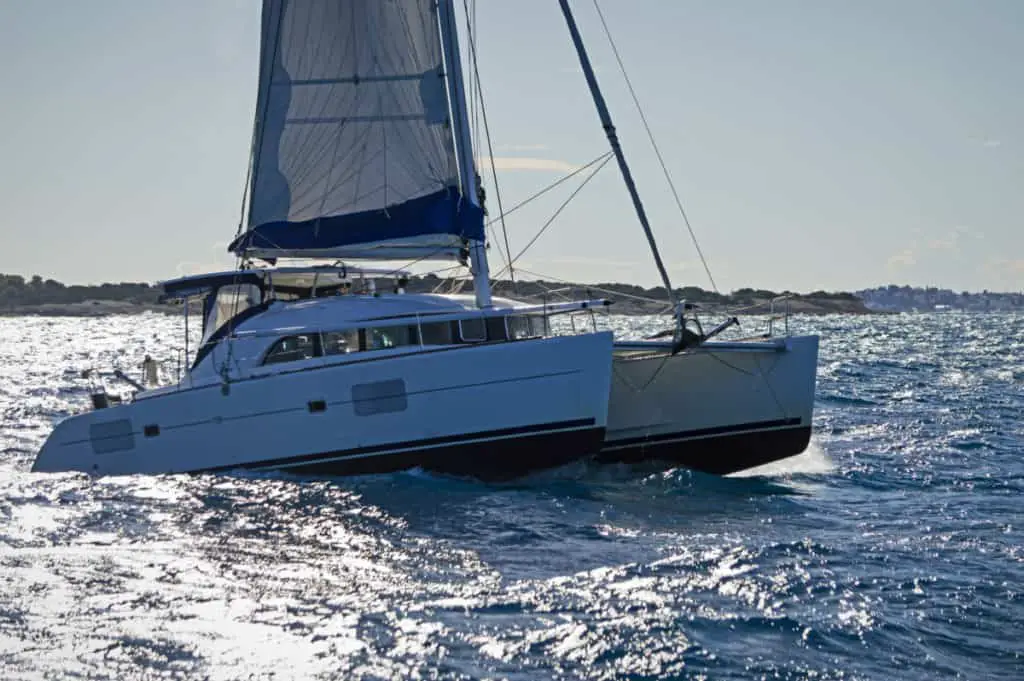
One big benefit of having a boat that heels is that it’s a great way to get feedback on whether or not the boat is overpowered. Since a catamaran stays flat, it is harder for a new captain to understand when to reef.
This could be a safety issue for those transitioning from monohulls to catamarans, which I believe is the most common way people acquire a catamaran.
7. Monohulls Are Harder to Dock
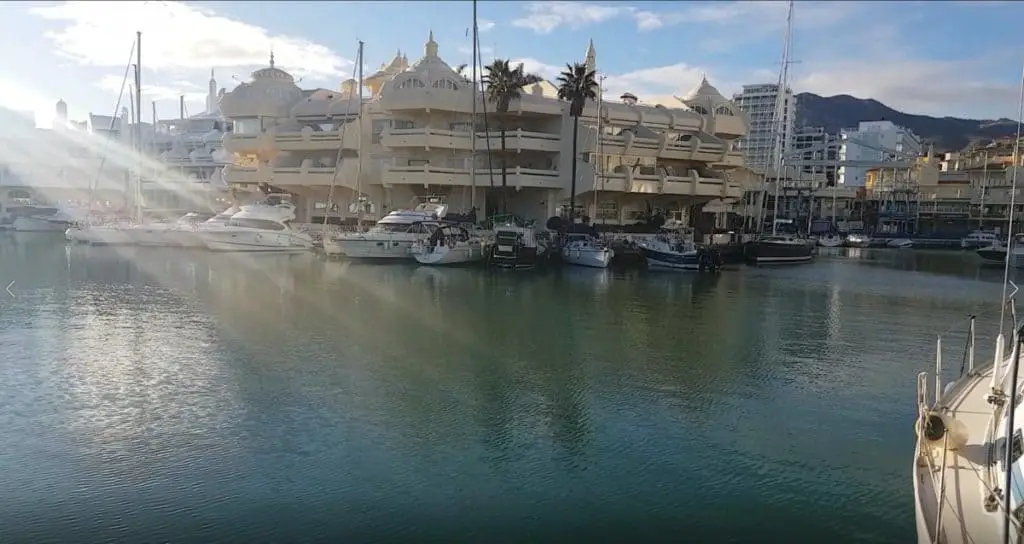
For a monohull to turn, it needs enough water passing around the rudder; for enough water to pass around the rudder, the boat needs to be moving. So this means once you stop your boat, you can’t turn; the things that move you are the wind and the current. This is the tricky part with a monohull, the timing needs to be perfect, or you’ll either go too fast and hit the dock, or you’ll go too slow and drift away.
On a catamaran, that’s different, you see; now you have two engines, much like a battle tank, you can now make a 360 turn on the spot. This means you can do a full stop, put one engine in forward and one in reverse, making the boat spin on its axis. That’s great! I wish my car would do that.
8. Catamarans Are More Fuel-Efficient
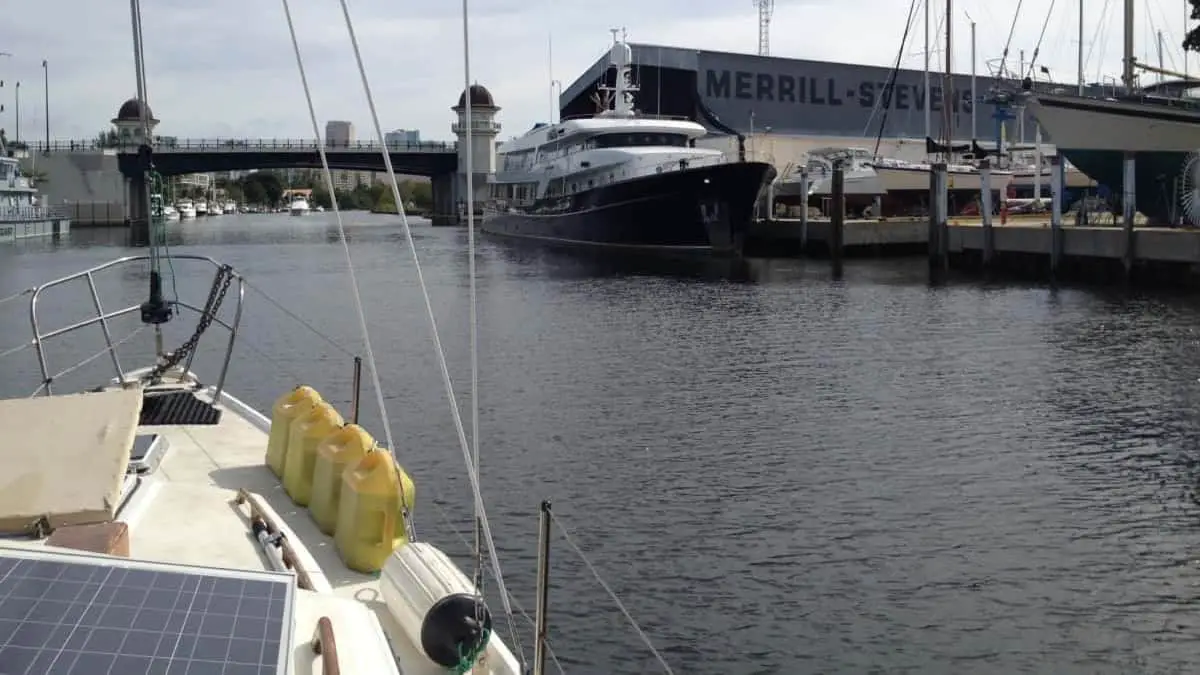
Saying a catamaran is fuel-efficient is like saying your Ford F150 truck is fuel-efficient. But, in comparison to its one-hull brother, it’s true, this really needs a lot more explanation for it to be a fair comparison, but only considering the lengths of the boat, the catamaran will consume less fuel.
This is mostly a consequence of the less drag a catamaran has since the weight is distributed over a greater area.
- Catamaran fuel efficiency data contributed by owners
- Electric vs gas: outboard engines. Which is the best?
9. Catamarans Offer More Comfort
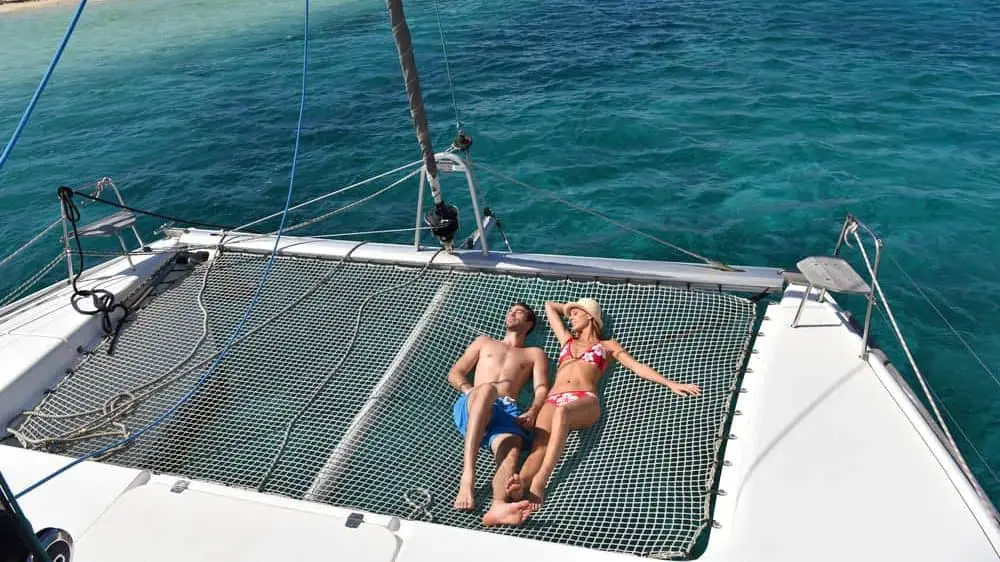
Since catamarans have more space and don’t heel as much, they offer a more comfortable experience. One beautiful aspect of having a big deck is that you can hang out in the trampolines; they are basically two big hammocks, and since hammocks already are great, putting them on a boat makes them awesome.
And since it doesn’t heel, you can also freely move around on the boat without spilling your drink or being at risk of falling overboard. This also means that going inside to cook is a treat since you don’t have to cook while trying not to fall over.
Looks and Other Factors
All in all, catamarans are great, but so are monohulls; there are also many other factors that I haven’t mentioned yet; these are mainly factors of the heart.
Many people feel that it isn’t real sailing if it isn’t done like it was in the good old days, heeling over and all. And to some extent, I can totally agree with that, but on the other hand, enjoying those two trampolines while on a sunny weather cruise down the bay is something I can’t forget.
And also the looks, catamarans look great; I think they look and almost move like those manta rays you can see down in the Bahamas. On the other hand, there is not much cooler than seeing a solid old monohull dig deep into the waves and go almost straight into the wind; what a feeling!
What do you think?
Owner of CatamaranFreedom.com. A minimalist that has lived in a caravan in Sweden, 35ft Monohull in the Bahamas, and right now in his self-built Van. He just started the next adventure, to circumnavigate the world on a Catamaran!
Leave a Reply Cancel reply
Your email address will not be published. Required fields are marked *
Save my name and email in this browser for the next time I comment.
Recent Posts
Must-Have Boat Gear for Catamaran Sailors!
Sailing is probably the most gear-intensive activity I've ever done; there are so many decisions to be made about what gear to buy now, for tomorrow, and what to definitely never buy. The gear on...
6 Best Trailerable Trimarans For Bluewater and Coastal Sailing
Having a boat costs a lot of money, even when you are not using it, marina fees, etc. And once it is in the water most sailors never go very far from their "home marina" and sailing will be somewhat...

Catamaran vs. Monohull: We Changed, Should You?

There are two schools of thought when it comes to monohull versus catamaran . We have done extensive cruising and lived aboard two monohulls and four catamarans over the past 25+ years . We experienced the good and the bad for both single hull and multihulls first hand. Quite honestly, the pluses for catamarans far outweigh the minuses. There are multiple benefits of catamarans. They are faster, more stable and spacious, and have shallower drafts allowing safer anchorage closer to shore. Being on a stable platform with no heeling cuts down on crew fatigue and seasickness leaving the crew more alert and in control of the vessel. Even novice sailors feel more confident on catamarans.
When we built our monohull Royal Salute in the early 90s, catamarans were not established and were looked upon with extreme suspicion by most cruisers, including ourselves. “Safety and the capsize” issue were always the first things to come up against sailing catamarans. It is a fact that monohulls can get rolled in heavy seas but will right themselves because of the heavy lead keel, and while crew and vessel will be battered, the roll is survivable.
However a catamaran once capsized, will remain upside down (jokingly referring to this state of the catamaran as “reaching its most stable position when upside down”). The inability of a catamaran to self-right was and still is a major bone of contention. However, what is not often discussed is that a monohull has about a 5,000 pound keel of lead that is constantly trying to drag the boat to the bottom of the ocean versus a catamaran that has no ballast and is in most cases with modern catamarans, unsinkable.
So the options are to either sail the world on a boat that, if it springs a leak, will sink like a stone or a vessel that cannot self-right in the event of a capsize but will not sink no matter what. So from a practical point of view, here are our observations over the last 25+ years of living aboard, on the advantages and disadvantages of a catamaran.
ADVANTAGES OF A CATAMARAN
1. speed equals safety.
The speed of a catamaran makes it possible to outrun bad weather. While catamarans do not point as high into the wind as a monohull (or if it does, it makes more leeway or slides sideways), it is about 20% faster than a monohull. This means that even if you sail upwind at a slightly wider angle to the wind than a monohull and have to cover more distance, you will still arrive at your destination long before a monohull.
A modern performance catamaran with daggerboards and good quality sails will point as high as a similar sized monohull. It will point the same as a comparable monohull and sail much faster and therefore arrive at an upwind position much sooner than a the monohull. It is important to note that most of the production catamarans on the market are under-powered and are equipped with standard smaller sails. In lighter breezes many of these designs perform poorly unless fitted with bigger headsails, a Code Zero and a square-top mainsail.
While we believe that more comfortable and safer in rough weather , we have to concede that when the weather gets really bad (60 knots of wind or more) we would personally prefer to be on a monohull from the standpoint of surviving. I would say that a monohull is preferable for serious offshore single-handed sailing because you can more easily hove-to in a monohull. We have been in some extreme weather on a number of catamarans and never really felt that we were in danger, although it takes some nifty seamanship.
A monohull could capsize in extreme weather or even roll in a storm, but they generally come back upright. A catamaran on the other hand, will not right itself. But the cat will generally stay afloat, offering a good place to survive while you wait out the storm or until help comes along. Well-designed modern catamarans are very hard to capsize though.
Having said all that, most catamarans can do 200 to 250 miles a day and with modern technology allowing one to pull down weather at will, there is no good reason why you should get caught in extreme weather. A faster boat is a safer boat as it will in many cases be able to outrun bad weather. With good weather routing information a catamaran can avoid most serious weather and, at worst, place itself in the most favorable position to avoid the brunt of a storm.
2. A Catamaran is a Stable, Safe Platform Underway
Catamarans have no ballast in the keels like monohulls do and therefor it relies on beam and buoyancy for stability. Typically cruising catamarans will have a beam to length ratio of roughly 50%, although many designs nowadays exceed the 50% rule of thumb. So, a 45-ft long catamaran will be about 22-ft wide, providing a very stable platform when sailing. Unlike catamarans, monohulls cannot overcome the rolling and pitching with their narrow beam and the lead ballast for stability.
This rolling and pitching makes the deck on a monohull very unsafe whereas on walking around on the deck of a catamaran while underway is far easier since the boat is much more stable, and it doesn’t heel. This makes sail changes and reefing much easier and a lot safer for the crew. Without the rolling and pitching motion, the danger of falling overboard on a catamaran is considerably less than on a monohull.
3. Crew Fatigue Reduces on a Catamaran
Because a catamaran does not heel over like a monohull, it offers far more comfort underway because the motion is mostly fore and aft pitching and very little beam-to-beam rolling. On all points of sail, a catamaran tracks upright and significantly reduces crew fatigue and seasickness. Seasickness is usually caused by things like anxiety, fatigue, hunger and cold, which all add to a sense of disorientation. This leads the crew to making bad decisions and seamanship errors that could be fatal to the crew and vessel. The more stable platform of the catamaran will hugely keep those issues at bay, making the crew more alert and energized.
Every action and chore including cooking is much easier on a catamaran when underway. It is much more pleasant to be on the deck level looking out rather than being stuck “down below.” It is also much nicer to sleep on a boat that doesn’t heel. I remember nights at sea in our monohull when I was rolling around in my bunk unless I was properly wedge in a little corner. That is simply not the case on catamarans.
All these factors ensure that your crew will not expend unnecessary energy to simply try and stay upright, onboard and safe on a long passage. Your crew on a catamaran will be well rested and alert and will be able to function well if a stressful situation arises.
4. Comfort at Anchor
Catamarans provide a wide platform and therefore offer lovely spaces to relax at anchor without the rolling motion that monohulls have a tendency to do in a swell. During our 15 years of cruising on a monohull, we have often had to leave anchorages that we really were not finished exploring because of a rolly, uncomfortable anchorage. Big rollers or swells coming into an anchorage can make conditions in an anchorage very uncomfortable and unsafe.
We were anchored off Funchal on the island of Madeira in our monohull Royal Salute once, when we were forced to leave our anchorage. The rolling became so bad, we were rolling from gunnel to gunnel. The anchorage became untenable to remain anchored, forcing us to go out to sea in foul weather in the middle of the night. This is an extreme case but believe me, we have left many an idyllic anchorage because of a rolling swell into the anchorage. Catamarans, on the other hand, do not roll from like monohulls have a tendency to do and are far more comfortable at anchor.
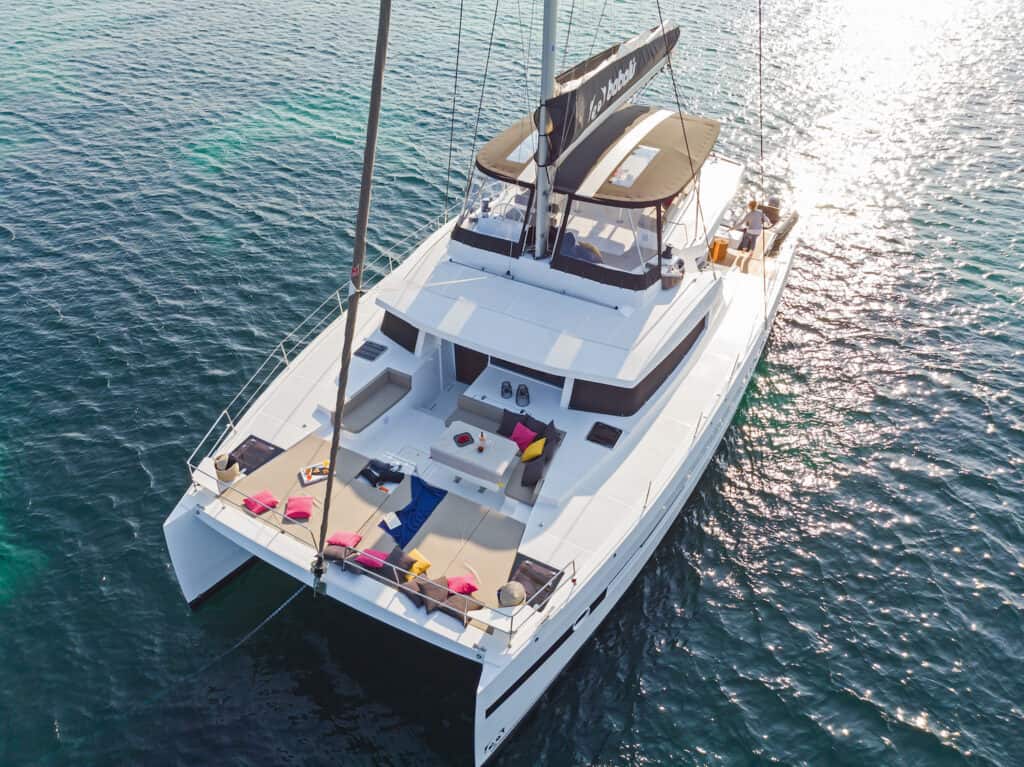
5. Anchor Bridal Setup

Catamarans are fitted with a bridle, attached to both bows and down to the anchor chain, resulting in a very stable position at anchor. What we found with our monohull was that because the bow acts as a sail (because of the high freeboard), the boat tended to sail at anchor in high winds. It sailed in one direction until the chain snatched and tacked over and sailed in the other direction, feeling like it might dislodge the anchor altogether. The catamaran on the other hand sits at anchor a lot more stable and doesn’t sail around as much.
6. Ease of Boarding on a Catamaran
Thank goodness we were much younger and more agile during our monohull days. Royal Salute and most monohulls of her generation or older, have high free-boards, making it quite a feat to get onto the boat from the dinghy. It was one of the most challenging things to do because unlike the more modern monohulls that have a scoop at the back, we had to climb up on the side of the boat to get on and off. We, of course rigged steps, etc. but it was always a hassle compared to the ease of getting on and off a catamaran from a dingy or from the water.
7. Shallow Draft Equals Better Anchorages
Catamarans have significantly shallower drafts than monohulls, allowing for safer anchorages closer to shore. Most catamarans in the 40-ft to 50-ft range draw between 3-ft to 4.5-ft, so they can anchor in places that a monohulls can not even consider. In the shallow waters of the Bahamas for example, the catamarans have a big advantage. We often anchor our own catamaran just a few feet away from a beach. It definitely allows one to be able to explore areas where the water is shallow without the fear of running aground.
The shallow draft also allows for emergency repairs in shallow water and even doing the bottom job when the tide goes out as we have done in places like Mtwapa Creek in Kenya, East Africa. The catamaran easily rests on her keels on the sand without help making it a breeze to do the “annual haul out” even in remote locations.
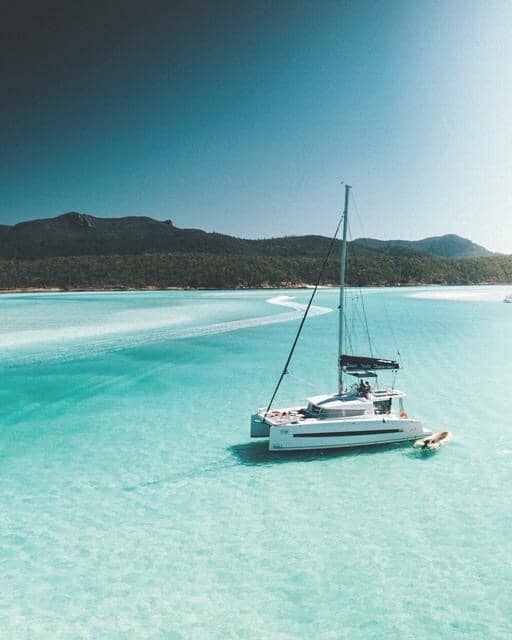
8. Dinghy Davits & Dinghy Size
All catamarans have a set of davits that make it very easy to raise and lower the dingy. Our monohull and most cruising monohulls do not have an efficient or easily accessible set of davits. This makes raising and lowering the dingy an elaborate production. Catamarans on the other hand, has davits systems easily accessible and some even have platforms to rest the dinghy on.
The lack of beam and difficulty of lifting the dinghy also limits the size and type of dingy that one can reasonably carry on a monohull. As we all know, the dingy is your transport to and from shore and diving or fishing spots, so the bigger and faster the dingy, the better off you are. A catamaran can carry both a heavier and bigger dinghy which makes the popular center consul dinghy so much more possible.

9. Interior Space and Comfort on a Catamaran
We sailed 32,000 NM on our 45-ft monohull, happy as clams, not realizing that sailing does not have to be done lying on your ear 24/7 while on passage or sitting knee-to-knee in the cockpit at anchor with your two other guests at the dinner table! One can liken sitting in a monohull cockpit to sitting in an empty Jacuzzi, you are always nice and close to the other folks.
Now that we are on our fourth catamaran, there are a few things that have become more evident to us than the incredible space and comfort of a catamaran, not only at anchor but also underway. The cockpit and living space in general are huge compared to a monohull, making for very comfortable and spacious living conditions. It feels more like you are at home, rather than just on a camping trip.
Knowing that one spends at least 90% of one’s cruising life at anchor, it’s important to have good open living space, which most modern cats nowadays offer. A lot of cats have walk around beds, lots of storage, every modern appliance including washer/dryer, etc. However, one has to fight the urge to fill the space if you want to keep the cat light and fast.

Sailing with guests onboard for extended periods of time, in close quarters can become claustrophobic but on a catamaran people are spread out and separated. With guests sleeping in one hull and the owners in another, catamarans offer much more privacy and separation. Some cats even have privacy doors that will close off the entire hull and has a separate entrance onto the deck, which really separates you from the guests completely.
There is very little heeling on a catamaran, so there is no need for hand grips and safety harnesses inside the boat. There is nothing better (and safer) than being able to walk from the cockpit into the living room (saloon) on one level or one step down at most. In a monohull, when heeling at a severe angle, you would have to claw your way from the companionway steps down to the living area, while fighting to stay upright, significantly tapping your energy.
Unless you hit extreme conditions, everything stays put on a catamaran reducing the anxiety before doing passages of having to stow and secure everything. This very issue makes a lot of cruisers reluctant to weigh anchor and explore more often. It is just too much effort to pack away all your stuff once comfortable in an anchorage!
One thing you will notice is that the stove on catamarans are not gimbaled like it is on monohulls and this should tell the story in itself. The stability and comfort on a catamaran is far superior. Cooking is easy and safer. I often open a nice cold beer, put it down to do something and forget about it only to find a warm beer later in the same place I left it. This is not something that happens on a monohull.
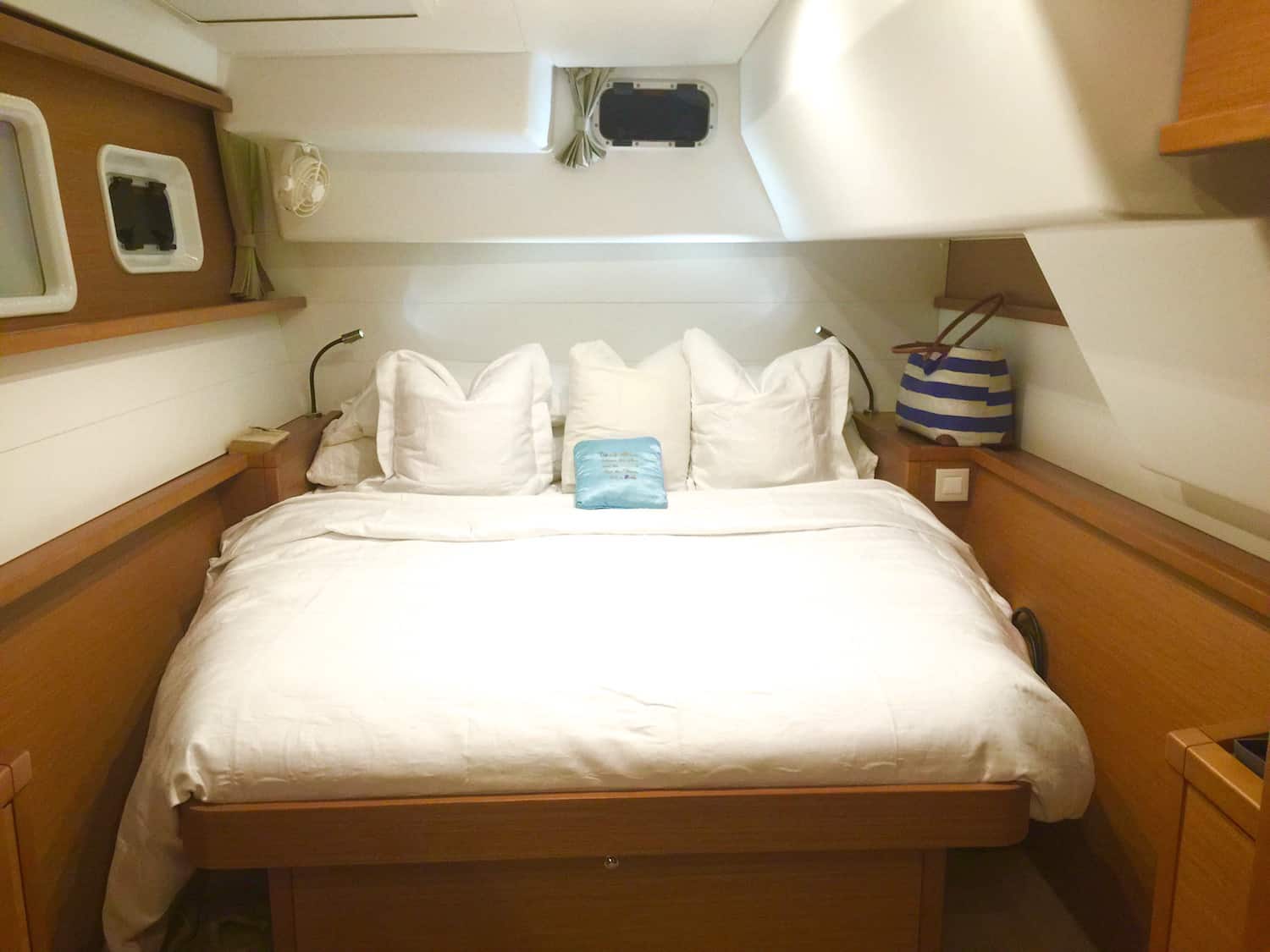
10. Redundancy on a Catamaran
Unlike monohulls, catamarans have a lot of critical redundancies. That of course means two hulls to clean and anti-foul, double the engine maintenance, etc. but having two of the critical equipment like engines for instance, outweighs the downside.
With two engines, if one fails you still have adequate propulsion to go anywhere. If by some fluke the second engine also fails, you have a full set of spares to fix at least one of them. Our friends once hit a sleeping whale off Tanzania, and when it dove, it hit the prop, bending it. They limped into the narrow channel on the one engine but at least they could make it to a safe harbor where we surveyed and repaired their damage.
We often only use one engine when motoring while making passage in order to conserve our fuel. The one engine is totally capable of moving the boat along at a good speed unless you are in heavy seas and you may need more power. Other than that we only use two engines to dock or maneuver the boat in close quarters.
Because there are two engines there are also two independent charging systems via the alternator on each engine. If one alternator goes out, there is still another complete charging system. There are two rudders and if one fails or falls off (as has happened to our friends on a monohull off Columbia, where they almost lost their boat) you have a second rudder that is completely capable of steering the boat by itself indefinitely. That holds true for several things on a catamaran!
11. Maneuverability
The engines are spaced far apart on a catamaran and it makes maneuvering much easier and more precise than monohulls, unless the monohull has a bow thruster. We did not have a bow thruster (not many monohulls do) and had to rely on prop-walk and using prop wash on the rudder. A modern catamaran can do a 360 turn on her own axis. A monohull cannot do this and have a bigger turning circle. However, a monohull under sail is much more maneuverable and certainly will tack a lot faster than a catamaran. The ease in maneuverability under engine on a catamaran in close quarters specifically, is vastly superior comparatively.
12. Rigging
Because of the beam on a catamaran the spinnaker pole has become unnecessary equipment. Hallelujah, I say. That pole on our monohull was a pain the behind and I always hated having to use it. On a catamaran, one can fly an asymmetrical cruising chute or spinnaker, using the bows to tack the clew or run a guy through a block so it is very much simplified, easier and safer.We also sail wing-on-wing with twin headsails when we sail downwind. We use our furling jib and furling Code Zero. It is as easy as one, two, three.
DISADVANTAGES OF A CATAMARAN
1. bridgedeck slamming.
One advantage most monohulls do have when underway is that they don’t slam. Catamarans with a low bridgedeck clearance can experience significant slamming in confused seas sailing upwind. This slamming can be quite disconcerting when you first experience it as we did on a Shuttleworth 44 design, our first ever catamaran experience, 20+ years ago. At times, it felt as though the boat was falling apart. Of course the boat was fine but nevertheless, the stress on the crew from the constant noise and discomfort was significant.
Monohulls don’t have a bridgedeck which means no slamming and are therefore a bit more comfortable than l ow bridgedeck catamarans when beating into severe confused conditions or “washing machine” conditions as we call it. Modern catamarans mostly have better bridgedeck clearance and the slamming is significantly less. However, not all cats have a good clear tunnel under the bridgedeck. Some manufacturers build beds into the bridge deck in order to make more space in the chest of the catamaran where the slamming occurs. These protuberances into the bridgedeck tunnel will likely increase slamming. So be mindful of that when selecting a catamaran. We currently own a Bali 5.4 and the bridgedeck clearance on this boat is more than adequate and the tunnel is clear. We therefor experience very little slamming compared to our Prout 45 that we previously owned (picture of sister ship below) with a much lower bridgedeck.
We Explain Bridgedeck Clearance
In the pictures below, the Bali 5.4 has very good clearance from the water to the bridgedeck and has a nice clean tunnel versus the very low bridgedeck of the Sunreef 50.

2. Sailing Downwind
Monohull spreaders are set at 90 degrees to the mast whereas a catamaran has to have backswept spreaders. The reason is that, on a monohull, there is a backstay and using this, plus the intermediates you can get a nice pre-bend in the mast (the pre-bend is to flatten out the main sail and allow for better performance).
On a catamaran with no back stay, you need to use the back swept spreaders and the diamonds to pre-bend the mast. The reason I point this out is because on a catamaran, if you want to broad reach or run, the mainsail cannot be let out all the way because the backswept spreader tips could punch holes in the fabric.
On a monohull, the spreaders are at 90 degrees so you can let the main and the boom out much further which is, of course, much more effective. This is one of the reasons it is better to broad reach and tack downwind on a catamaran.
Whether a monohull or multihull, sailing dead downwind doesn’t usually make great VMG. Therefor a regular cruising cat, much like a monohull, needs a lot of sail area and has to sail deep downwind if it is to achieve a decent speed made good (VMG). This video demonstrates how we achieve this by sailing wing-on-wing downwind.
It is more difficult to find a dock either as a transient or a permanent slip for a catamaran in general because of the wide beam. But this is changing fast and will soon not be too much of an issue. In the USA dockage is charged by the length of the boat in feet, so there is no disadvantage there but, in some places, (the Mediterranean for example), dockage is charged at length times one and a half because of the additional beam.
Since the catamaran is stable at anchor, we mostly anchor out. We have more privacy, a better breeze and usually a stunning view.We have a nice dinghy with a good outboard engine and is big and comfortable enough to get to shore fast and together with the modern conveniences like the generator, watermaker and washer/dryer, docking becomes a non-issue.
It is definitely more difficult to find a travel lift with enough beam for a catamaran for a haulout, while, for a monohull, there are absolutely no problems anywhere. The wide beam of cats also greatly limits the number of shipyards that can haul them out. Most catamarans over 40-ft must be hauled out with a 50-ton travel lift. This not only increases the cost of the haulout, but greatly limits the choice of the shipyards for repairs and maintenance. With limited choice, prices are high for shipyard services.
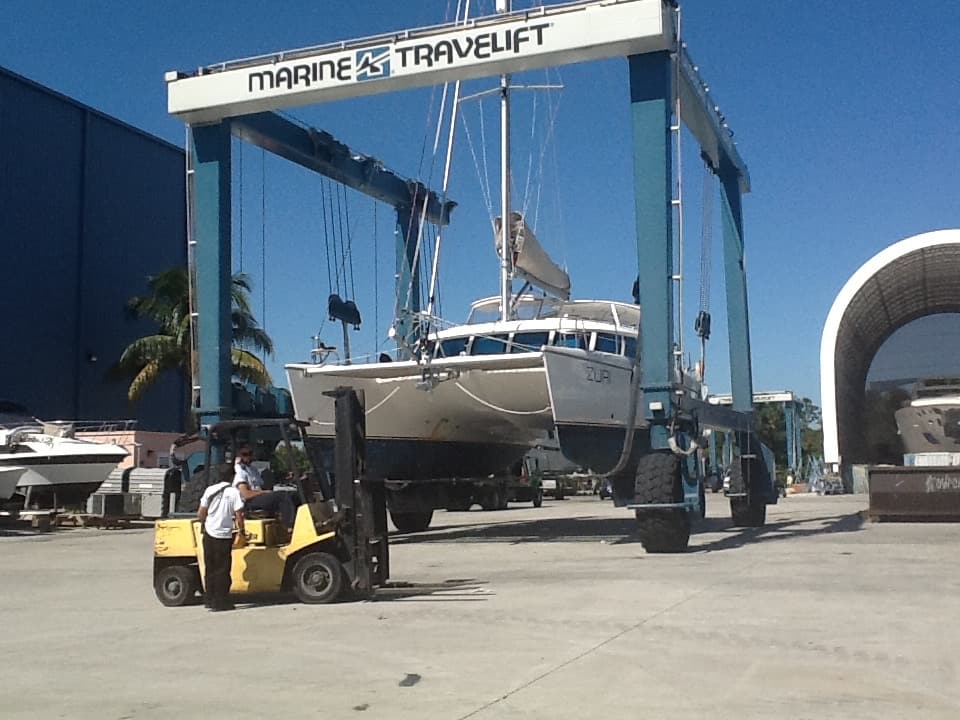
Catamarans do tend to have a lot more windage than monohulls. This can be an issue especially when maneuvering in close quarters with a strong wind. But I have found that, provided the engines are powerful enough for the size of catamaran, that twin engines negate this problem. Also, many modern large catamarans now have a bow thruster fitted. It is super easy to dock.
The cost of getting into a catamaran is much higher than that of monohulls. That could put a serious dent in your cruising kitty or require you to put your dream on hold a little longer. Pre-owned monohulls on the other hand are very cheap to buy comparatively, because the supply presently far outweighs the demand.
Catamarans are in high demand and they typically hold their value much better and longer and the trend is now heavily in favor of the catamaran market. When prospective buyers contact us for catamarans under $250,000 the choices are very limited and catamarans under $100,000 is near impossible to buy. In this case, your best bet is to go with a monohull unless you go with much older boats like the Prouts or the less expensive Geminis.
Our Own Catamarans & Monohulls
FYI: Royal Salute , a Bruce Roberts 45 monohull, was the first boat we owned and sailed approx. 30,000NM on. Mythral, a Seafarer 30, was our “toy boat” while we were waiting for our catamaran to be built. Even though this classic little monohull sailed around the world, it didn’t have much in modern conveniences like running water. Siyaya was an Island Spirit 40 catamaran that we sailed from Cape Town to Florida on and then taught live-aboard sailing classes for several years. Zuri I was a Prout 45, a beautifully crafted catamaran but by today’s standards is considered old technology. Our Lagoon 450 SporTop ( Zuri II ) is a fantastic live-aboard catamaran. We lived and taught aboard her for three years but sold her last year and we currently own a Bali 5.4 ( Zuri III or Z3 as we call her now). Read about our various boats .

CONCLUSION: CATAMARAN vs MONOHULL
We were dyed in the wool monohull sailors for 15+ years. We loved the pretty lines of monohulls, the sailing ability and what we believed at the time to be much safer vessels. However, now that we have been avid catamaran enthusiasts, we simply can never go back to monohulls. Catamarans have come of age and with modern technology have overcome most objections that sailors of old had against them. They are well designed and built, are safe, and we simply love that they sail fast and upright. There is not a whole lot to dislike about a catamaran when you live aboard. We have weighed all the pros and cons of catamarans and found that the pros far exceed the cons. We made the change to a catamaran and do not regret it one bit!
We hope that this article will clear things up for all the prospective catamaran owners out there.
Contact us if you have any questions regarding catamarans, Fractional Yacht Ownership or our Charter Management Programs .
Estelle Cockcroft
Join our community.
Get the latest on catamaran news, sailing events, buying and selling tips, community happenings, webinars & seminars, and much more!
4 thoughts on “Catamaran vs. Monohull: We Changed, Should You?”
I read that the engineering on the catamarans were improved over the years. Whats the oldest year would you recommend designwise?
Scott, my apologies for the late reply. We’ve been traveling in Africa. Anyway, catamarans have come a long way and improvements in technology is happening at lightning speed. I reckon that even the older model catamarans are good. It depends on what your needs are. If you want something a little better performance wise, I would go for something no older than 15 years.
After buying a catamaran what is the difference in expense of a catamaran vs a monohull. Many articles state that not only the initial cost of a catamaran is more it the operating cost as well.
Hi Todd, it is more expensive. The annual dockage and haul out as well as maintenance will be more expensive. You obviously have two engines to maintain and various other pieces of equipment to service in both hulls. While there is more equipment there is also more redundancy and of course you have the comfort factor. So, depending on your situation, it’s probably worth it.
Leave a Comment Cancel Reply
Your email address will not be published. Required fields are marked *
Save my name, email, and website in this browser for the next time I comment.
Recent Posts

Annapolis Open House 2024
Join us at Pier 7 Marina located at 48 S River Rd South, Edgewater,

Paramount Business Jets Partners with Charter Agency!
The collaboration of Myst Yacht Charters and Paramount Business Jets offer you the most luxurious yachts
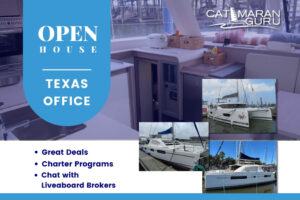
Texas Open House
Join us April 13 – 14 for our open house at our Texas office during the

First-Annual Virgin Islands Boating Exhibition (VIBE)
VIBE – It’s a Destination Boat Show! Join us May 10 – 12 at

For more than 30 years, we have been a part of the catamaran community and created Catamaran Guru™ to encourage and educate all the aspiring sailing out there. We understand the dream of traveling the world by catamaran and created a one-stop-shop to make that dream a reality for you.

- Stephen & Estelle
- Testimonials
Get Started
- Yacht Sales
- Used Yachts
- Charter Management
- Boat as Business Programs
- Seminars & Events

Yacht vs Catamaran: Which Boat is Right for You?
- On October 23, 2023
- No Comments
When it comes to leisure boating, two of the most popular options are yachts and catamarans. But what exactly is the difference, and which one is better suited for your needs?
In this comprehensive guide, I’ll compare the key characteristics between monohull yachts and twin-hulled catamarans.
Visual Comparison of Catamaran and Yacht Designs
How they differ in handling and performance, onboard living spaces and amenities, ownership and operating costs, which boat is right for you, defining catamarans and yachts.
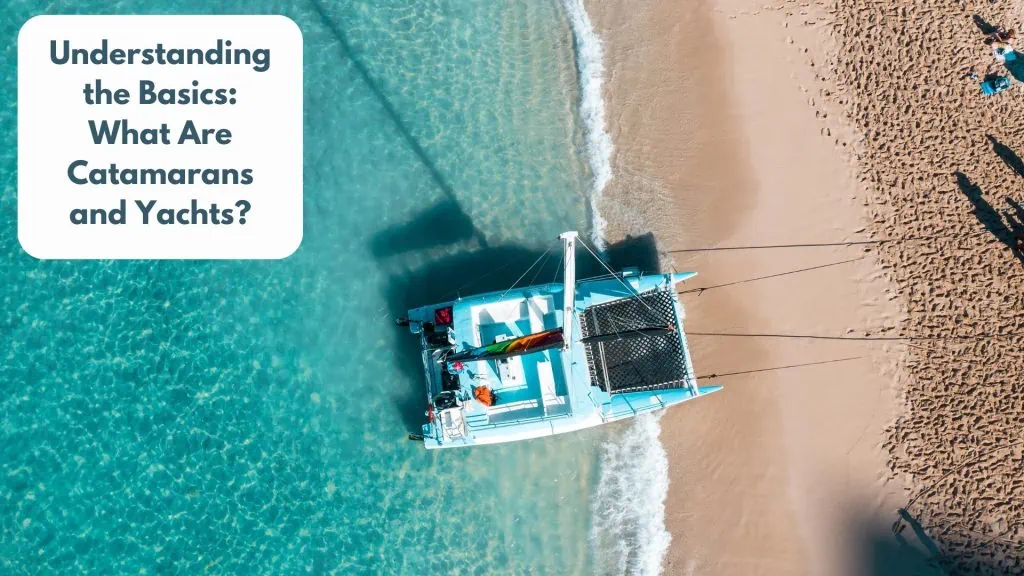
A catamaran is a type of multihull boat featuring two parallel hulls connected by a central deck. This twin-hull design provides more stability, expansive interior space, and shallow draft.
Yachts, on the other hand, have a single continuous hull and are known for their elegant aesthetics, lavish amenities, and versatility for long-range cruising.
Here’s a quick visual comparison of the general shapes and hull configurations:
Catamarans typically range anywhere from 40 to 70 feet in length, while yachts can be as small as 30 feet or over 100 feet for superyacht models.
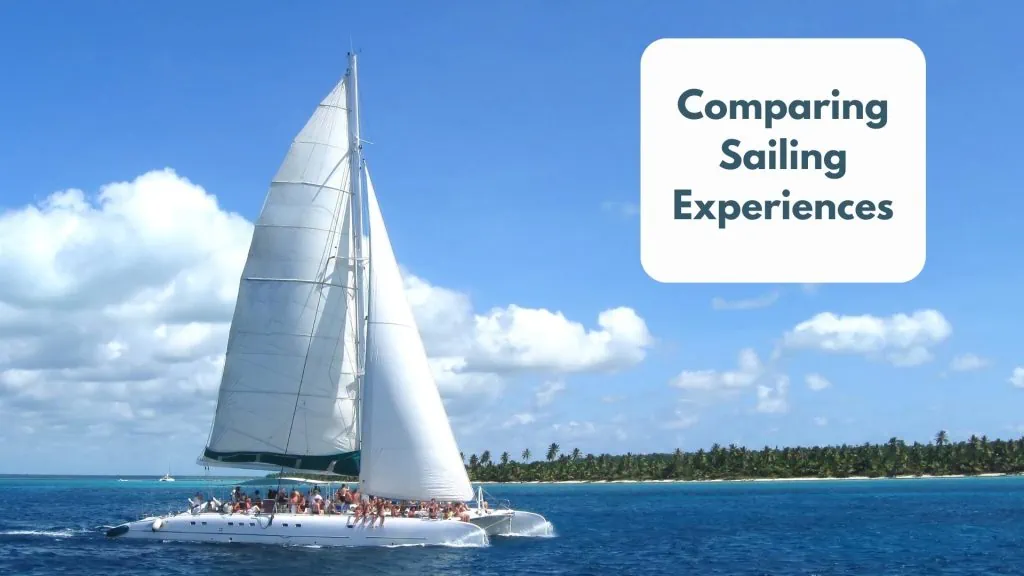
When it comes to maneuverability and sailing dynamics, there are some key distinctions between catamarans and yachts:
- Speed – Catamarans are lighter and have reduced drag, making them significantly faster than yachts. Top speeds can reach up to 25 knots.
- Stability – With their twin hulls, catamarans offer unmatched stability and minimal rocking motion in rougher seas. This also reduces seasickness.
- Maneuverability – Yachts take more skill to maneuver tight spaces, while catamarans can turn 360 degrees within their own length.
- Windward Performance – Yachts point higher into the wind and sail more efficiently upwind. Catamarans excel on reaches and downwind sailing.
So for performance-oriented sailing, monohull yachts have some advantages. But catamarans trade maneuverability for supreme stability and comfort on the water.
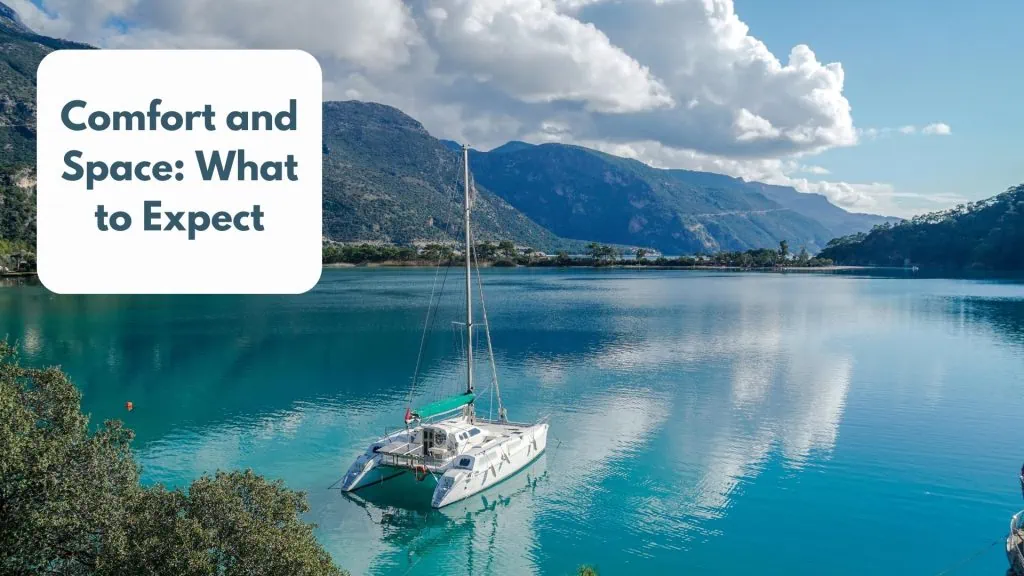
One major differentiation between these two boat types is the onboard living spaces and amenities. Some key comparisons:
- Deck Space – With their spacious bridge deck, catamarans offer ample lounging and relaxation space for large groups. Yachts have more confined deck space.
- Cabins – Catamaran cabins are typically larger and more comfortable. But yachts allow for more privacy when chartering with other couples or guests.
- Entertainment – Yachts focus more on lavish entertainment amenities like high-end sound systems, theaters, and bars. Catamarans offer more outdoor fun.
- Overall Comfort – For stability, living accommodations, and seasickness reduction, catamarans are vastly more comfortable boats.
So catamarans excel when it comes to providing generous living areas for group getaways and family vacations. But yachts are tailored more for couples charters and luxury amenities.
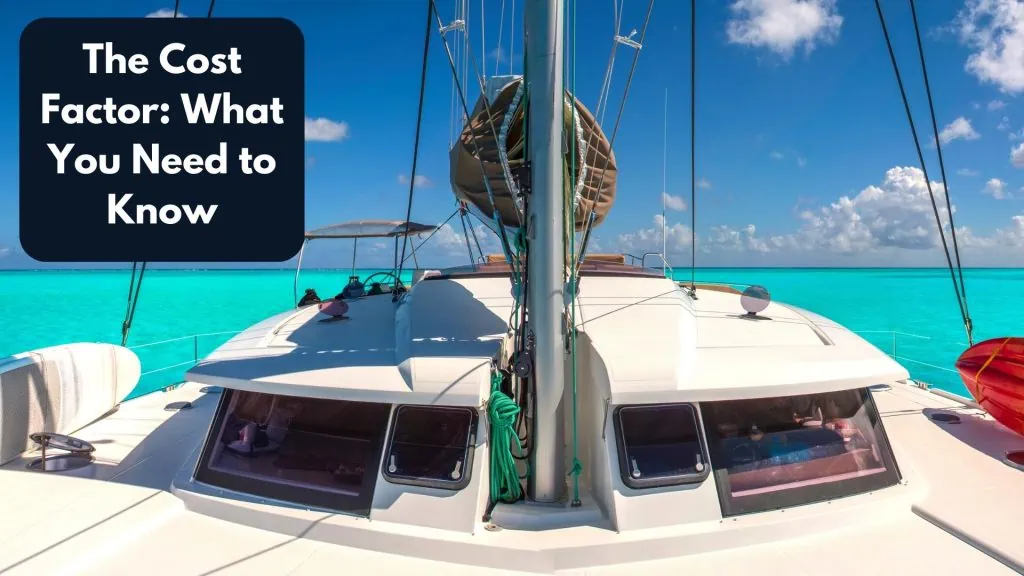
A significant factor to weigh is the overall ownership costs between catamarans and yachts:
- Purchase Price – Due to larger size and dual engines, catamarans come at a higher initial purchase cost. Yachts are more affordable for comparable lengths.
- Fuel Efficiency – With two engines to power, catamarans use almost twice as much fuel to operate. Yachts are more efficient.
- Docking and Marina Fees – Catamarans incur higher fees because they take up more dock space, especially in high-traffic areas.
- Maintenance – More complex systems and dual engines onboard catamarans equate to higher lifetime maintenance costs.
- Resale Value – Depreciation varies widely, but yachts tend to retain resale value better in the pre-owned market.
Clearly, the costs of owning and operating a catamaran are substantially higher compared to a similar-sized yacht. Being aware of these expenses will help determine the right boat for your budget.
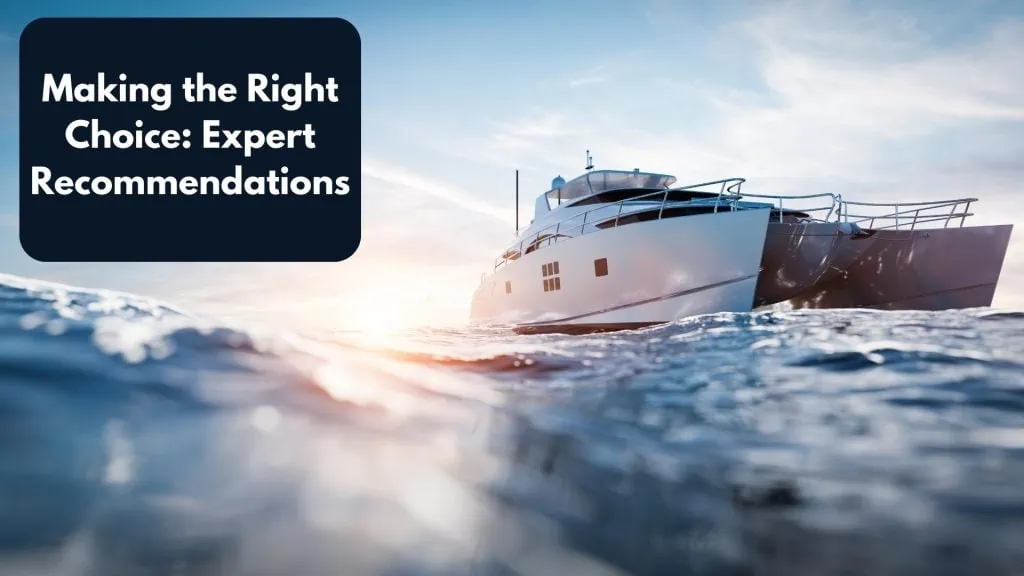
We’ve covered a lot of comparisons, so which boat type is the best choice? Here are some quick recommendations based on needs:
- For comfort, stability, and spaciousness on extended cruising trips – Catamaran
- For performance-focused sailing and nimble maneuverability – Yacht
- For luxurious amenities and entertaining small groups – Yacht
- For exhilarating speed and family-friendly features – Catamaran
- For affordable purchase and lower operating costs – Yacht
Of course, it depends on your individual priorities and boating style. Charter both for a test run to see which you enjoy more. At the end of the day, the right boat is the one that fulfills your needs and invites you to experience the magic of the open water.
Hopefully this guide has provided a helpful overview of the core differences between catamarans and yachts. Let the voyage begin!
- https://catamaranguru.com/catamaran-vs-monohull-we-changed-should-you/
- https://blog.cancunsailing.com/en/diferencia-entre-yate-y-catamaran
- https://www.mbcyachts.com/types-of-yachts-and-their-pros-and-cons/
- https://makaiyachts.com/power-catamaran-vs-monohull/
You might also be interested in reading:

The Top 3 Boat History Report Websites Reviewed
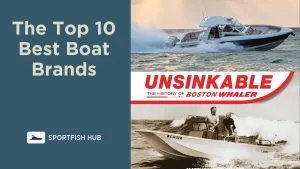
The Top 10 Best Boat Brands
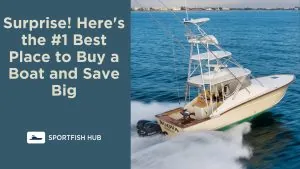
Best Place to Buy a Boat
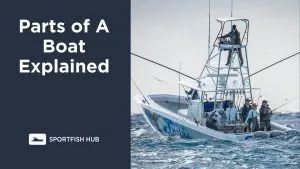
Parts of A Boat Explained
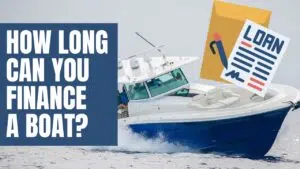
How Long Can You Finance A Boat

Steve Momot
Steve is an accomplished professional photographer and marketer who specializes in the Fishing, Yacht, and Boating industry. With a strong presence as an influencer and marketing expert in the Marine Industry, he has made a significant impact in the field. Additionally, Steve is the original creator and co-founder of Sportfishtrader. Prior to his career as a marine photographer, he gained extensive experience as a licensed boat and car dealer in South Florida.
Leave a Reply Cancel reply
Your email address will not be published. Required fields are marked *
You might also like.

Who Makes The Biggest Sport Fishing Boat?

Fishing Memes

What is Sportfishing?

Sportfish Hub was founded with a clear and unwavering mission in mind: To provide boaters and fishermen with the highest quality content, offering invaluable insights, tips, and resources.
- Terms of Service
- Privacy Policy
SOCial Media
Get in touch, © 2023 | all rights reserved.

A Trusted Source For Boating Information Since 2019
A complete catamaran guide.
- Post Written By: Boater Jer
- Published: January 26, 2020
- Updated: November 27, 2020

Disclaimer: You might notice that we recommend products in some articles. We may earn a commission for referring you if you click the link and buy a product.
We only recommend products we’ve tried/tested/own (that’s why you won’t find thousands of affiliate links on my site). If you have experience with one of the products we’ve mentioned, please share your experiences in the comments at the end.
Advertisement

There you are, out on the water when a strange craft approaches. Is it a sailboat? It sure looks like one until it turns to face you. That’s when you notice this boat doesn’t have just one hull. It has two hulls and it’s called a catamaran.
Catamarans are unique, and highly stable watercraft. We’ll explore all the ins and outs of sailing the waters in one of these weird, and awesome multi-hulled craft. Join me as we explore the wild world of sailing catamarans.
A History Of The Catamaran
It is believed that the first people to use a catamaran design were those living in Australasia.
The succession of boat design in this region was actually very interesting. The beginning of boats in the area was simple, albeit conventional rafts. These were fashioned from logs strewn together with plant fiber lashings such as those formed using bamboo fiber.
Catamaran Evolution
The conventional raft gave way to a minimal raft. This design was basically a conventional raft with two cross beams added in the form of logs. These would be eventually hollowed out to improve buoyancy.

The next step in the evolution of boats in the Australasian region was the double canoe. This proved to be the first real catamarans.
After some time, the form evolved further into the asymmetrical double canoe design. In this design, one canoe was large and the other attached canoe was smaller.
The asymmetrical design quickly evolved into the single-outrigger boat like the one shown in the photo below.
The final stage of the evolution of the catamaran in the region was to gain a second outrigger. This in effect created the trimaran with the single central hull and dual outriggers.
Eye Witness Accounts Of Catamarans
In 1697, William Dampier wrote of witnessing a type of seafaring vessel off the coast of Coromandel. He noted how the locals called the type of boat a catamaran. He also noted that it had multiple hulls (logs) and that they were small vessels that the person operating would have to hang partway into the water, straddling the hull (log).
The name catamaran came from the Tamil. And yet, it was easily applied by the European visitors to the two hulled sailing vessels that sped across the water in the region.
Although Dampier may have described the catamaran in the 1690s, the type of boat was actually used as early as the 5th century by the Tamil Chola dynasty. They used boats to move their troops from one island to another. Using this design of boat allowed them to travel heavy, travel quickly and was partially responsible for the conquering of neighboring Burma, Malaysia, and Indonesia.

Building A Boat – Basics Of Catamaran Construction
A boat is usually thought of as being a single-hulled vessel that travels along the surface of the water. It can have multiple types, shapes, and designs of the hull. However, it is often only thought of as having a single hull. But, what if it had two hulls? Would that be like taking two separate boats, and making a raft over both of them? In essence, that is exactly what a catamaran is: two boats made into one.
Advantages Of Multiple Hulls
- More stability than a monohull
- Wide supporting base allows for larger sails than monohull craft of the same length
- Hull does not require the deep-running keel of a standard monohull sailboat
- Less hull drag in the water than a monohull
- Less power required to drive a catamaran forward than a monohull boat
Disadvantages Of Multiple Hulls
- Due to multiple hulls, construction is more expensive than a monohull design
- Catamaran speed relies on lightweight materials to make a lightweight craft. This also drives up the cost of construction.
- Extra engineering requirements for multi-hull craft also increase the cost of construction.
Conclusion? Well, it looks to me like everything about catamarans points towards superiority over monohulls in nearly every way. But, you get what you pay for. I think the same thing likely applies to cars too. For instance, I have a performance car that cost me about 10k more than the equivalent non-sports car within the same class.
Yet to drive the vehicle, it performs so much better than the normal version of the car, it really speaks volumes to the difference between a common vehicle, and a performance one.
Speaking of performance vehicles, let’s take a look now at the different kinds and uses of a catamaran.
Catamaran Types
Commercial catamarans – ferries.
One of the most common uses for a catamaran is the commercial use of the vehicle design when it comes to ferries. This is likely due to the wide, flat deck possibilities of a catamaran versus a monohulled boat. Not only that, but the catamaran is also a much more stable bodied vessel. This again makes it a superior design for transporting larger land vessels like trucks and so forth. They can easily drive on the ferry without fear of the ferry tipping over.
Some ferries are designed for taking vehicles, like the one you might find in the city of Toronto. Where it transports cars from the mainland to Toronto Island. Others are designed specifically with the sole purpose of transporting people. I took a look at one such ferry that operates in Germany. Take a look at the following case study.
Commercial Use Case Study – The Ferry
The FRS Helgoline is a ferry catamaran operating out of Flensburg, Germany, close to the Danish border.

According to the ferry company’s website, the ferry runs using four main engines which are run to a capacity of 12,182 hp combined. This blasts this ferry at a speed of 35 knots or 65 km/hour. This is equivalent to 40 miles per hour. That’s pretty good considering the size and weight of the ship body this catamaran can carry.
Speaking of capacity, the ship can carry 680 passengers. At 56.4 meters long (185 feet) by 14 meters wide (45.9 feet), that’s a decent passenger capacity.
Catamaran Passenger Capacity Versus Monohull Boat Passenger Capacity
The general rule for calculating passenger capacity for a boat is as follows.
Length x Width / 15 = Passenger Capacity
Therefore, the FRS Helgoline should have a calculated capacity calculated as follows.
185 x 45.9 / 15 = 566
But it actually has a capacity of 680 which is a 20% increase in capacity over a standard monohull.

For comparison, let’s look at a superyacht. A 48.5m (159 feet) long by 10.7m (35 feet) beam (width of the boat) Palmer Johnson Supersport 48 (valued at about $28.5 million dollars) should have a capacity calculated as follows.
159 x 35 / 15 = 371
In short, 26 feet of difference in length equates to 309 fewer passengers. It is almost half of the capacity of the catamaran at 26 feet longer length.
Photo courtesy of https://sysyachtsales.com/
Commercial Catamarans – Service Vehicles
Although Catamarans are typically used as ferries due to their stability and ability to carry wide loads on their flat decks, there are many different service catamarans out there as well. From a support vessel to a crew transfer or search and rescue, catamarans are a solid and stable platform to build a ship on.
This is the Ardea which is a 20 meter (65.6 feet) catamaran to be used for crew transport and as a support ship. This ship was built by the Echo Marine Group and delivered to Western Australia in early 2019. This particular vessel is in the service of the Cape Preston Sino Iron Project.
Catamarans are used all around the world, for a variety of tasks, not just ferries or support craft.

Commercial Catamarans – Cruise Lines
Now these are the catamarans we all want to be aboard, aren’t they? Due to the wide stance, these ships can feature massive halls and wide-open interior areas. These ships are stable, and some would say even more stable and safer than monohull design ships.
There are many cruise ship catamarans in use today around the world. Some of the more ‘famous’ catamaran cruises are those which investigate the Galapagos Islands. There are several high-end, small fleet, cruise lines operating to the Galapagos which utilize catamaran design vessels as their primary ship type.
These ships can be extremely comfortable and stable and often offer some reprieve to those who may otherwise feel seasick. It won’t stop the feeling, but the more stable the hull, the less the boat rocks around.
Military Catamarans
Catamarans make excellent military transport vessels. They are stable and the potential to have a large, flat and wide deck for transporting land craft, troops or acting as a landing pad for vertical take-off aerial craft. The stability of the two hulls makes the vessel an excellent candidate for military use, and thus it is used for said purpose.
As you can clearly see in the image of the USNS Spearhead, the rear of the vessel has a moveable ramp that can be used for loading and unloading land vehicles. The interior bay of the craft is visible in the image as well, a large area for storage of vehicles, supplies and more. The crane arm on the back of the ship also shows how it is a versatile craft, set up to act as an excellent support craft with a helicopter landing pad and ample storage and freight capacity.
Recreational Catamarans
Catamaran Personal WatercraftThe wind is in your hair, the warm spray from the hull cutting over the edge of each wave as you skip over the water. That is life, let me tell you. Personal watercraft have come a long way over the years and the small one, two, three and four-person catamarans have come a long way as well.
Depending on the options, you can get a small one or two-person catamaran for as little as $1500 new. That might be an inflatable though. There are some very nice, rigid hull designed catamarans for 1-4 people that range from $3500 to $15000. And these are basically open, personal watercraft like that shown in the image below.
Using a small catamaran can be quite challenging to learn at first. Sailing is not for the faint of heart. It requires skill, technique, knowledge of the wind and sea, and a bit of hard work. But it can be fun, rewarding and a great way to catch some sun and fresh air out on the water. It’s a relatively GREEN sport as well. Given the use of sails over gas-powered motors that is.
‘Sailing Cats’ – Sailing Catamarans – Yacht & Luxury Class
Here’s where we get into the dreamy boats of the rich and famous. I priced out a small 43’ luxury Leopard 40 sailing catamaran. Even before I added any extras at all, the base price was $399,000 USD. I imagine if I added a few of the multiple extras available, and some tax, freight and that sort of thing, I’m easily in half a million dollars. And that’s the smallest base model.

There are all kinds of luxury catamaran shipbuilders across the world. From Asia to Europe and The Americas, it seems any major boating country has at least one company building luxury catamarans. It’s weird that you don’t see more of them on the water though, don’t you think?
Being sailing vessels, these luxury cats require some training in sailing before you get behind the wheel. And considering the price point, I would definitely want to be at least a semi-decent sailor with some good few years experience under my belt before I would comfortable at the helm of a half-million-dollar sailing cat. It’s all relative I suppose. I imagine a billionaire might bat an eye at the prospect of wrecking a half-million-dollar boat. But to me, and most of you reading this, that’s likely a lot of money.
‘Power Cats’ – Powered Catamarans
The powered catamaran is one of my favorite boats. They have sort of a muscle car appearance with the wide and often tall front end of the boats. I find it to be reminiscent of a large air intake on the front hood of a rally race car like the Subaru WRX, for instance. These boats are fast, they are stable and handle very well. Catamarans are often considered the boat of choice for long sea voyages due to their stability.
A powered catamaran will definitely cost more than a powered monohull boat of the same length. Why? Well, the powered catamaran has one crucial downside. That is, it needs two engines. One for each of the two hulls. Otherwise, it’s off balance for propulsion. These two engines or motors have to be in sync with each other or again, the propulsion will be off-balance. Because they have two motors, they have double the maintenance when it comes to maintaining the propulsion system.
More components also means a greater chance of things breaking down. In essence, it doubles the chances of the ship having a motor break down. The saving grace is that should one motor break, they have a backup, even if it does mean very unbalanced propulsion. In contrast, a monohull vessel of the same length may only have half the chance of motor failure due to only having one motor, but if that one motor breaks, then what? Call for help, that’s what. A cat would have a struggling chance to get itself back to port. A monohull would be dead in the water unless it was carrying spare parts or another motor onboard somewhere.
Catamaran Frequently Asked Questions
What is a catamaran cruise.
A catamaran cruise is simply a cruise on a dual hull design boat. Often used for river cruises, the catamaran which is used as cruise ships are often considerably smaller than their giant monohulled counterparts.
What is the purpose of a catamaran?
A catamaran is a design for a boat that utilizes two hulls. Due to the flat, platform-like-potential for the deck of the boat, the catamaran is often purposed with transporting materials, vehicles, and people. For instance, catamarans are quite often used as ferries.
Is catamaran safe?
Catamaran are very safe water craft. The design of riding on two hulls separated by a gap in between, in essence is like giving a car a double-wide wheel base. The wider the stance, the more stable the craft, from side to side anyway. And if the length of the boat is proportional to the width, then it becomes an extremely stable craft. That is why catamarans are often considered the best to be used for long voyages. Yes, catamaran are safe.
What is the difference between a catamaran and a sailboat?
A traditional sailboat is a deep, monohull vessel that has at least one mast extending high into the air above the deck to hold sails. A catamaran refers to the design of a dual-hull boat and really has nothing to do with sails. Although, catamaran do make excellent sailing boats as well, they are quite capable of acting as power boats and do not require sails if they have the correct amount of powered motors to propel them. Sailboats, although also able to be powered if a motor is provided, are traditionally monohull and wind-powered exclusively.
Do catamarans have small interiors?
The size of an interior cabin on a boat is typically proportional to the size of the boat itself. If a catamaran has above-deck cabins, they will likely be able to be of a larger design than those you would find on deck of a monohull boat. This is because a catamaran has a much wider footprint than a monohull boat of the same length. This extra width would allow for larger on deck cabins.
How much does a catamaran cost?
A personal watercraft (1-2 person) inflatable catamaran will run you anywhere from $1500-$12000 USD, depending on the quality and features. The rigid hull catamarans of the same size start at about $4500 USD.

A small cabin cruiser type of catamaran will typically start at about $60000 for a small base model and the price just goes up and up depending on size and features.
For Instance, a 40’, 3 cabin with 1 washroom cat will cost you about $500,000 USD for the base model. They are considerably more expensive that a monohull of the same length. However, the trade-off is greater stability and a smoother, more comfortable ride.
Is a catamaran more work to maintain?
Technically yes. Due to having two hulls and if powered, two motors and likely also water jets, this means you have double the oil changes of a boat that would have a single motor. Once you get past the basic engine and hull maintenance, a catamaran is not that much more work than a monohull ship of the same length.
The trouble with catamarans in terms of maintenance, is that once they reach a certain length, the width becomes more than a standard lane on the road. That being said, if you ever need to transport the boat via land, it can be quite the challenge. Especially if you need to pay to have a police escort for an extra-wide trailer. And special licensing might be involved as well.
What is the difference between a catamaran and a trimaran?
A catamaran is a dual hull boat. In other words, it has two hulls. A trimaran has three hulls.
Is a catamaran considered a yacht?
According to Oxford dictionary, a yacht is a medium-sized sailboat equipped for cruising or racing. A catamaran, on the other hand, is a boat with two hulls. Therefore, a catamaran can most certainly also be a yacht. And likewise, if a yacht has two hulls, then it is a catamaran as well.
Can you get seasick on a catamaran?
Seasickness occurs when a person feels nauseous from the swaying motion of a rocking ship. These feelings may be lessened on a catamaran, due to their extra stability. However, a catamaran may be slightly more stable than a monohull of the same length, but it is still a boat. And it will still make someone who experiences seasickness continue to feel the ill effects.
Are catamarans more stable in rough seas?
Catamarans are known to be more stable than monohull ships of the same length. This is why catamarans are often the ship type of choice for long sea voyages due to their stability.
Why do catamarans capsize?
Catamarans are not known for capsizing. The larger vessels that is anyway. But, it does happen from time to time. Catamarans are known for their stability, so typically if a capsize event should occur, it is typical for them to be extreme circumstances.

Personal watercraft catamarans are a different story though. These are in fact known for tipping over. Not because they are less stable than their monohull counterparts of the same length. But instead, because they are able to go considerably faster than monohull personal watercraft of the same length (not including powered craft though). This is due to the sailing cats being able to have a larger sail than a small monohull sailboat of the same length.
Due to the extra sail, they are able to travel faster than monohull sailboats of the same length. This allows them to whip around on the water and at higher speeds, whipping your cat about quick can easily send it over sideways. Extra speed means fast turns carry momentum in the direction of travel and that extra speed equates to tipping over if turned too fast. To sum up, they capsize due to user error or extreme events.
Which is safer, a catamaran or a monohull?
Due to the extra stability of having a wider footprint than a monohull, a catamaran of the same length is the safer vessel.
Are catamarans safer than sailboats?
The same rule applies to stability versus the length of the hull. A cat will always be the more stable length for length. However, due to their ability to go much faster than a monohull sailboat, this kind of cancels out some of the added safety due to stability. With that in mind, they may just be about the same but there is one generalization we can make when comparing the safety of catamarans vs sailboats: At the same speed, and of equal length, sailing or power catamaran will be safer than a monohull sailboat.
How fast can catamarans go?
The speed a catamaran can go is entirely dependent upon the hull design, weight of the vessel, the strength of propulsion (be it wind or powered) and so on. The general rule is that in terms of sailing cats vs monohull sailboats, a cat of equal length can typically go faster than a sailboat.
In terms of powered cats vs powerboats, a powered catamaran will typically require less energy to move forward than a monohull of the same sort of hull design (but monohull of course) and thus a cat should, in theory, be able to go faster than a monohull when both are using propulsion that is equal in power.
Bibliography
- Wikipedia – Catamarans
- Mahdi, Waruno (1999). “The Dispersal of Austronesian boat forms in the Indian Ocean”. In Blench, Roger; Spriggs, Matthew (eds.). Archaeology and Language III: Artefacts languages, and texts . One World Archaeology. 34 . Routledge. pp. 144–179. ISBN 0415100542 .
- Wikipedia – Spearhead -class expeditionary fast transport
- https://www.tiki-toki.com/timeline/entry/169516/Origin-of-the-catamaran/#vars!panel=1620923!
- https://www.austal.com/ships/passenger-express-56
- https://www.adventure-life.com/galapagos/galapagos-catamaran-cruises
Boating Gear
Take a look at our Recommended page for a variety of items. Here are some of the things you can expect:
- GPS And Fish Trackers
- Hitch And Trailer Supplies
- Lifejackets And Specialty Clothing
- Boating Books And More!

Crab Island by Pontoon: A Fun Watery Boating Guide Destination in 2024
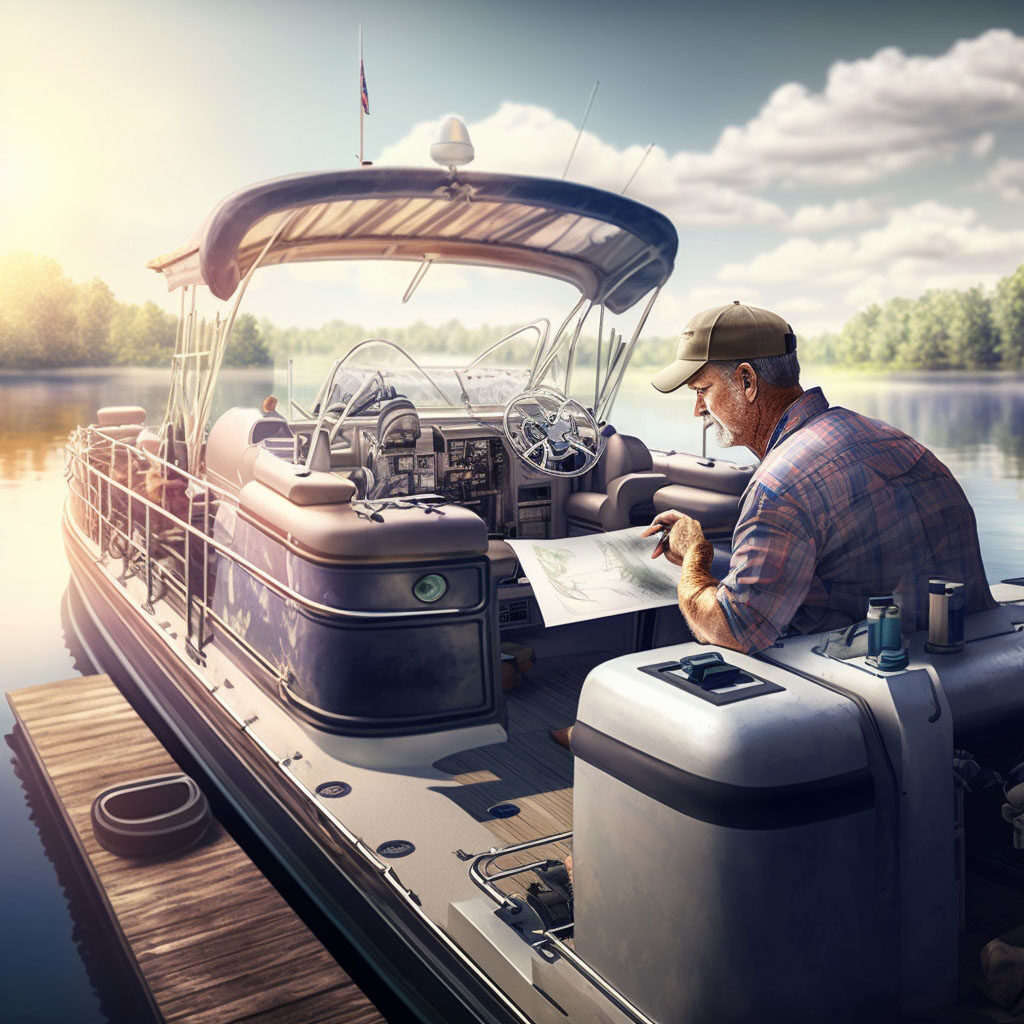

Upgrade Your Boating Experience: Adding a Third Pontoon Made Easy!

How Long Does It Take A Canoe To Go… (Canoe Calculator Here)

In-Depth Review of the Pelican Sentinel 100X Fishing Kayak: Pros, Cons, and Performance

How To Put A Kayak In The Water – The Ultimate Guide For New Kayakers

Best Cruising Catamarans For Couples
More from boating guide magazine.
- Pontoon Boat Basics
- The Complete Runabout Boat & Trailer Towing Guide
- Winterizing Your Boat
- Boating Gear Requirements For Canada And USA Waters
- Aluminum vs. Fiberglass Bass Boats
- Better Boating At Night & How To Survive The Darkness
- Staying Safe On A Catamaran: 24 Essential Tips
- Can A Catamaran Capsize?
- 4 Common Types Of Propulsion For Boats
Return To Home * About Boating Guide * About The Author
fakewatches.is

Share this post with your friends
- Tags: boat type , catamaran , catamaran basics , catamaran essentials , sailing
Subscribe to our Newsletter
Join us in our love for all things water. And Adventure.

PowerDolphin Wizard Water Surface Drone – Best Surface Drone?
The coolest drones are the ones you can take out on the water. Like a water surface drone like the PowerDolphin Wizard. This thing is awesome.

Better Boating At Night & How To Survive The Darkness
Advertisement Have you ever been watching a horror movie and everything gets really quiet all of a sudden? Something like: “Angela slowly walked down the hallway on the second floor of the old Victorian farmhouse. The candle in hand was flickering, teasing to go out as the wood creaked and hawed under her stocking feet.
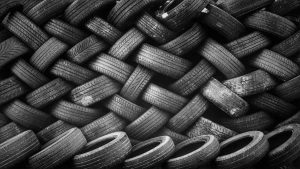
Boat Trailer Tire Guide
Advertisement A boat trailer tire is something that is neglected by most everyday people. In other words, a tire is an underrated part. However, the main question arises that is a tire underrated, or is it just a myth? This section deals with the factors and facts that are related to the boat trailer tire.

When Is A Boat Called A Yacht? (Find Out Here – FAST)
Advertisement When is a boat called a yacht? Let’s find out. The marine community interchangeably uses boats, ships, and yachts. Even though these watercraft mostly sound the same, there are distinct differences among the three. Boats can refer to watercraft ranging from personal vessels to something that can carry one or more passengers. Yachts sound

This Is Why You Should Cover A Pontoon Boat
Covering a pontoon boat is a really smart idea. Here’s why. We also look at our favorite and cheap pontoon boat covers.

A Guide To Boat Seat Re-Upholstery Costs
Advertisement Boat Seat Re-Upholstery isn’t as tough as you might think. Boat seats can receive damage from direct sunlight, rain, moisture, water, etc. Re-upholstering is the best way to recover your existing boat seats. Re-upholstery can be cheaper than replacing the entire boat seats, and you can either hire a professional or do it yourself.

Boat Information By Type
© 2023 Boating.Guide, A Hyperwave Media Group Ltd. Publication.
Privacy Overview
- 2024 BOAT BUYERS GUIDE
- MIAMI BOAT SHOW
- Email Newsletters
- Fishing Boat Reviews
- Fly Fishing
- Marine Electronics
- Fishing Tackle
- Fishing Destinations
- The Bahamas Fishing Guide
- Boating Safety

2023 Boat Buyers Guide: Catamarans
- By Karl Anderson
- December 27, 2022
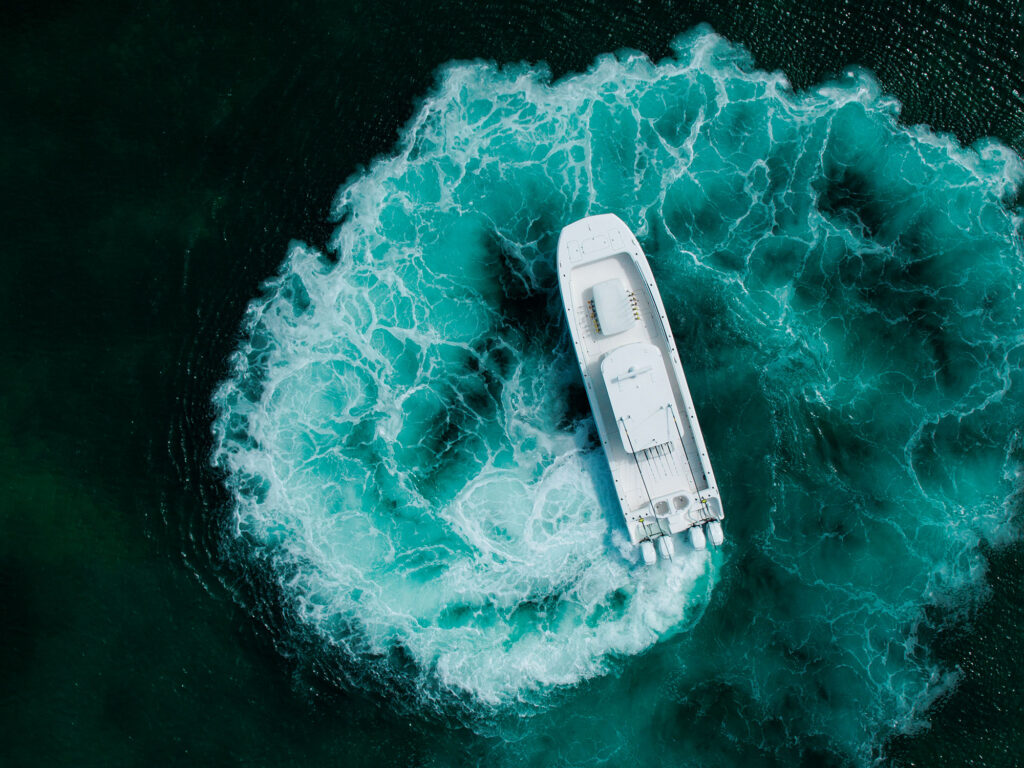
The popularity of the multihull (aka catamaran or cat) fishing boats has never been greater, as more and more boatbuilders enter this growing segment of the market. The inherent stability of the catamaran design rolls less with the seas, making fishing offshore less tiresome and more comfortable. Available from 20 to 48 feet, catamarans typically offer a large fishing platform with generous storage and fishing amenities. They are available in a wide variety of deck layouts, including center-consoles, dual-consoles, and even pilothouse and express variants.
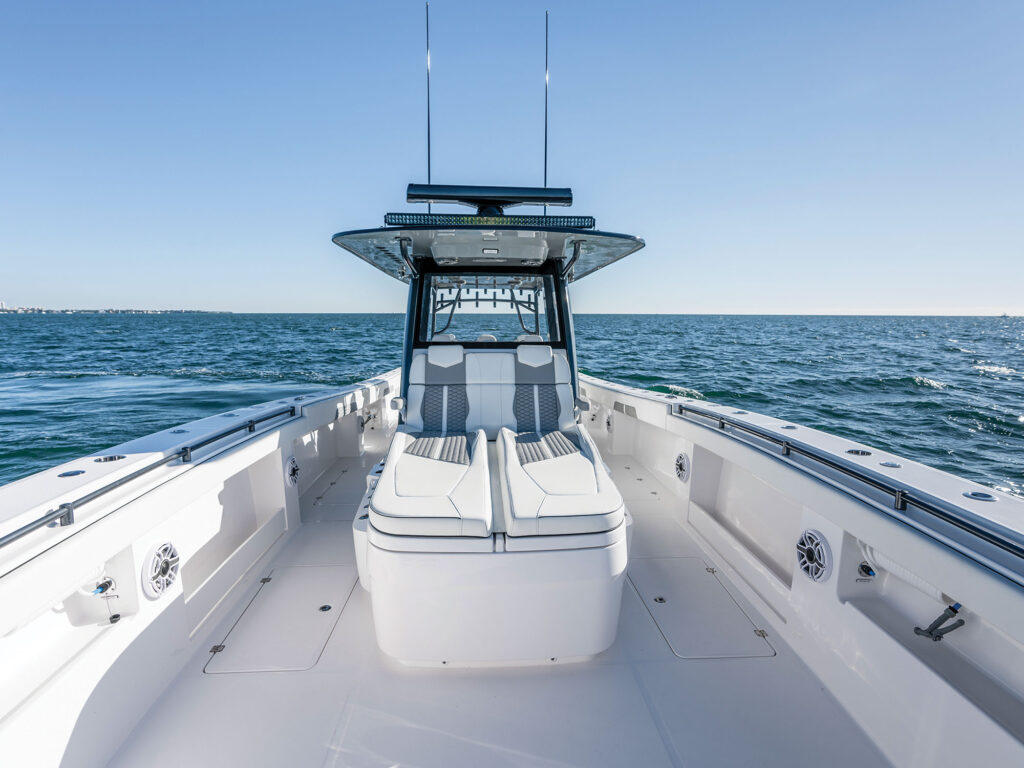
Big Picture
The large deck area of a catamaran enables many large underdeck storage lockers and insulated fish boxes in the sponsons. This gives anglers ample room for gear and the day’s catch. The catamaran’s stability, fishability, and smooth ride in rough seas make it attractive to anglers as well as day-cruisers. A center-console version adds 360 degrees of angler access to the rail. With the dual-console design, generous seating behind a beam-to-beam windshield makes for a great family fishing-friendly setup.
Live bait is one of the most popular types of fishing in virtually every coastal zone. To do it successfully requires optimal water capacity and proper flow. The minimum size of the outflow water plumbing should be twice the size of the inflow. The plumbing should have a drain at the bottom to shed scales at the end of the day, as well as a drain at the top of the well to adjust capacity and allow overflow. Above-deck transom-mounted wells should fully flood to the lids when running to keep baits from getting beat up.
Tip: A sump box with multiple pumps in case a pump fails is the best setup for first-rate livewells. Conveniently located inflow and outflow valves make it easy to optimize the flow without tiring your bait from swimming too much in the well.
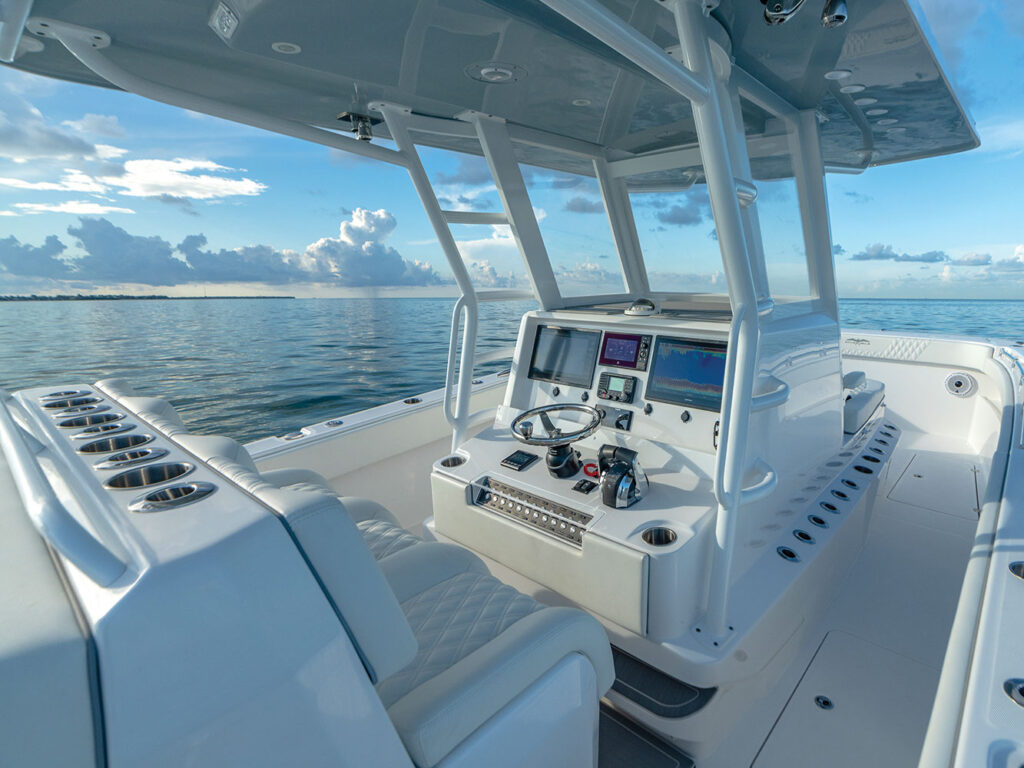
Rod Storage
Having enough rod holders is essential to be successful for opportunity fishing. Look for vertical rod storage along the console and across the back of the T-top. Many models also have rod holders along the outboard transom wall. Having plenty of gunwale rod holders for drift- and kite-fishing is helpful.
Tip: Placing adjustable swivel rod holders by Gemlux makes deep-dropping, lure-fishing and drifting even easier because they allow your rods to face the direction the baits are fishing, yet they can be swiveled back to keep rods from sticking out of the boat while running and docking.
Manufacturers often offer multiple choices for horsepower, but whatever the choice, the engines must come in pairs. For example, you might order twin outboards (one for each sponson) or four outboards (two for each sponson), but single- or triple-outboard configurations are not common on a cat. Optimal selection should be made based on user load, weight of the boat, ride comfort , performance desires, and best case for resale. It’s a rare day when you can run wide open, but having more horsepower gives better torque at slower speeds and thus better control. Running larger engines slower gives better fuel efficiency too.
Tip: When possible, choose the highest horsepower offered because it typically leads to a better resale value with a shorter sales cycle.
Power steering from engine manufacturer Optimus or SeaStar is essential with the higher horsepower required for larger boats, and it makes installing and operating the upper station in a tower far more practical and comfortable.
With the power demands of electronics, livewell pumps, stereo amps and more, it is wise to have at least two house batteries, and for larger boats, a third or fourth with a multibank charger for dockside. Each engine should have its own dedicated battery as well.
Electronics
Typically choosing the largest screen or multiple screens that will fit on the console is best-case scenario for ease of use, ergonomics, and visibility. VHF radios, stereo controller, and equipment switches for lighting, pumps, and accessories should all be integrated with greatest visibility and ease of operator reach.
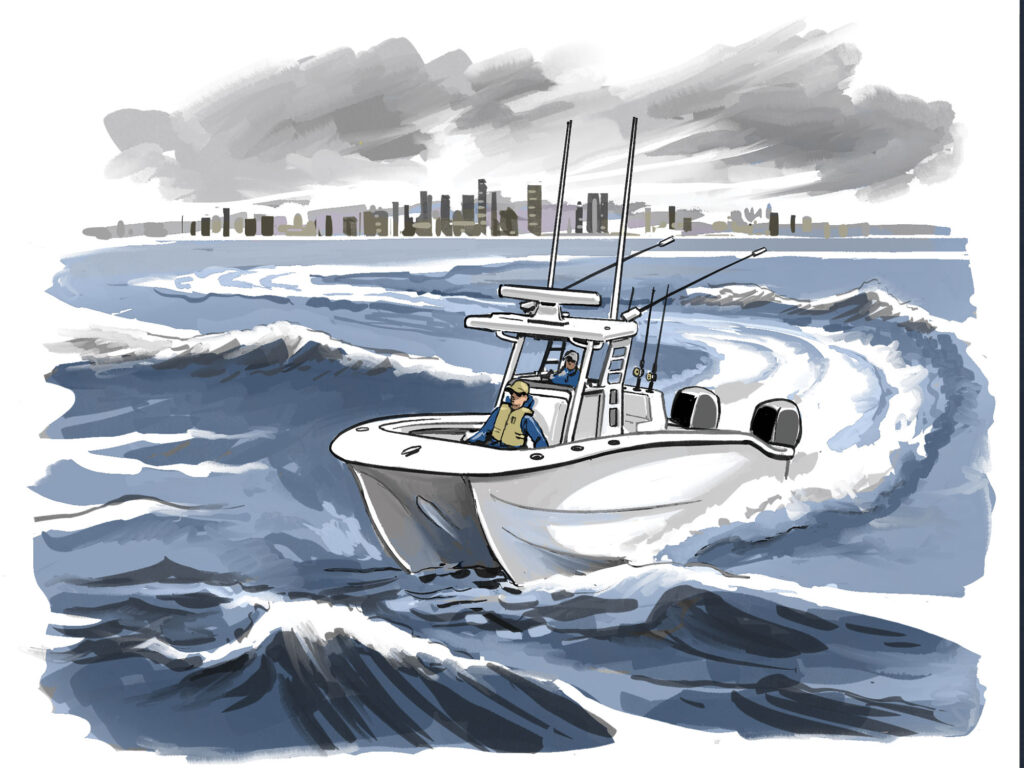
A Tale of Two Hulls
A catamaran rides on pair of hulls, or sponsons, each thinner and sharper than that of a similarly sized monohull boat. The narrow sponsons of the cat tend to slice easily through water to deliver a smooth ride, even in rough seas. At the same time, with the sponsons positioned out to the sides of the boat, cats tend to roll less, thus providing great stability to enhance crew comfort, security and safety. However, cats tend to corner more flatly than a monohull, and some hulls (but not all) tend to lean outward versus inward during a turn.
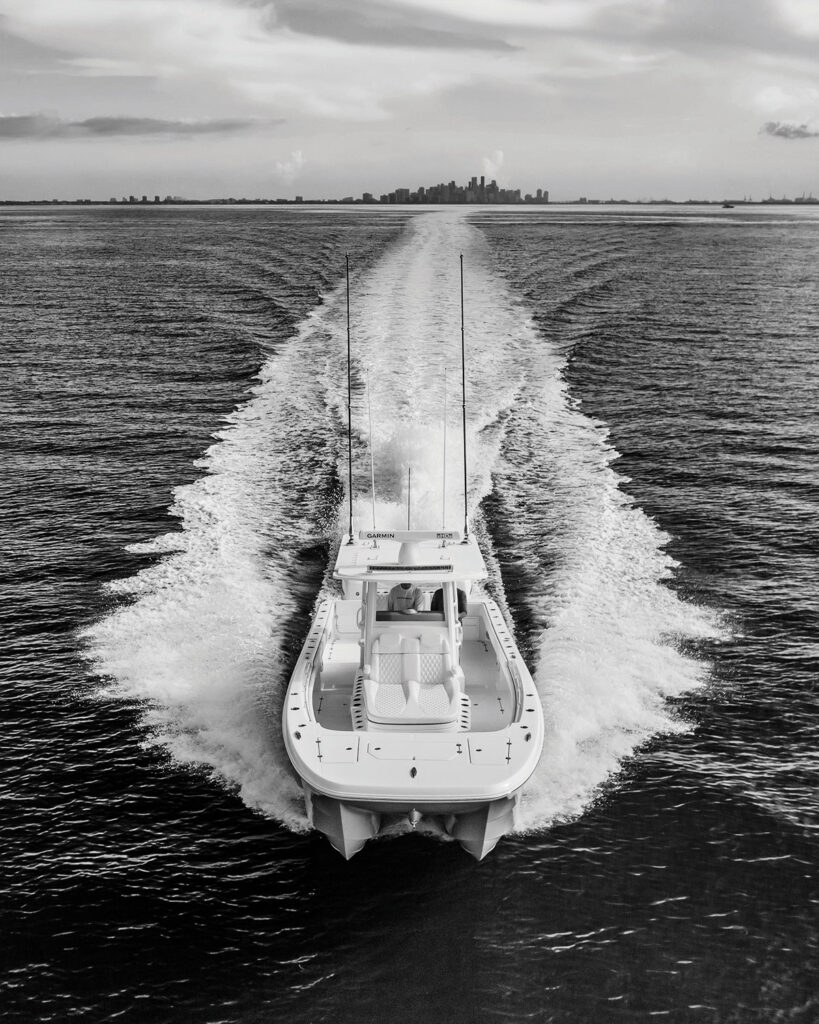
Experts Say
Newer designs such as Invincible’s Morelli and Melvin-designed semi-asymmetrical sponsons eliminate some of the negatives of the cat design, such as “sneezing,” where water sprays out the front of the boat when hitting a wave. They’ve also controlled the uncomfortable “outboard lean” sensation common in older designs when in a turn. Once transitioned to a catamaran, many become true believers and preach the benefits of the design.
Editor Says: Saltwater fishing cats not only offer superb stability and smooth ride, but some also display exceptional speed and range. I recall one trip out of Key West, Florida, aboard an Invincible 40 Cat with four 350 hp outboards to the Dry Tortugas. It was a 60-mile run, and we made it there in 70 minutes. We caught more fish than our arms could bear, and then dashed back to Key West, arriving in time for cocktail hour on the same day. -Jim Hendricks, Staff Editor, Boating and Fishing Group
- More: 2023 Boat Buyers Guide: More Resources , Boats
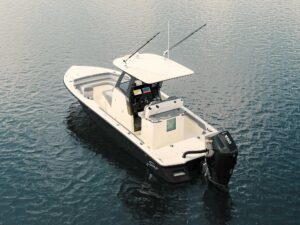
Scout 261 XSS
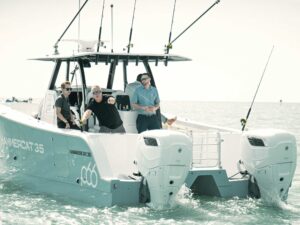
Cox 350 Diesel Outboard
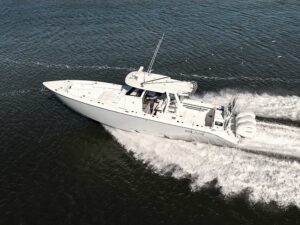
Solace 37CS
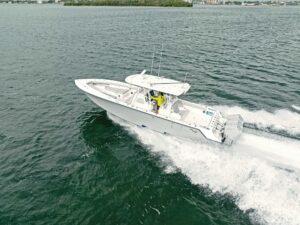
SeaVee 400Z

California’s Ocean Salmon Season Closed for Second Year

How to Sight-Fish for Cobia

The Importance of Grassroots Efforts to Recreational Fisheries Management

- Digital Edition
- Customer Service
- Privacy Policy
- Cruising World
- Sailing World
- Salt Water Sportsman
- Sport Fishing
- Wakeboarding

Catamaran Or Monohull? 27 Important Facts (Explained)
Catamarans and monohull boats are two very different kinds of vessels. Each craft offers distinct advantages and disadvantages that you’ll want to consider before choosing between the two.
In this post, we’ll go over some of the important things to consider when choosing between catamarans and monohull boats:
Table of Contents
Cost & Availability
Both catamarans and monohull boats come in small recreational sailing versions, larger motorboat versions, and larger sailing models. In all cases, the catamarans will cost more and will be harder to find.
The reason catamarans are harder to find because there are not as many of them, and they’re mostly made overseas.
Also, there aren’t as many catamaran manufacturers, so sailors have fewer options when buying them.
On top of this, catamarans have only recently become popular in the United States and other areas of the developed world. This means the used market for boats doesn’t have as many catamarans on it. You might find that you have fewer options when making a used catamaran purchase, which could bring costs up to a premium.
Two Times The Fun with Catamarans

Another reason that catamarans are more expensive than monohulls is the fact that catamaran buyers have to purchase two hulls, two engines, and two of all of the components that help make an engine work.
Traditional sailboats and large powerboats with one engine don’t have this cost issue.
On top of this, a catamaran is much wider than a monohull, and thus you have more space to build and equip.
On the other hand, once you’ve purchased the boat, you do get to enjoy the benefits of having two of everything. We’ll talk about the advantages of this further down in this post.
Maintenance Cost Makes A Difference
The maintenance on a catamaran is also more expensive than the maintenance on a monohull boat. This goes back to the fact that there is twice as much of everything to maintain.
Catamaran owners will need to do preventative maintenance on two different engines, and they’ll have two hulls and a large deck area to clean and maintain as well. If they’re getting the bottom of the boat treated, they’ll have to do this twice (once for each hull).
Even the interior components can usually be found twice.
Each cabin will usually have a head in it, so you’ll have at least two toilets and sinks to maintain, which obviously has its plusses and minuses.
One positive aspect of this is that catamaran owners do have the option of deferring some of their maintenance. For example, if one head is no longer functioning properly, you always have the second one that you can use.
It also adds a bit of safety as well.
This is because while the catamaran does have two engines to maintain, the owner does have power even if one of the engines happens to go down.
Some catamaran owners also like to point out that maintenance may not have to be done as frequently. This is because the engines don’t have to work quite as hard, and other items like additional bathrooms and sinks might only be used half as much.
How Much Space Do You Need?

A catamaran has more space than a monohull. This is because the boat is wider, and it has a much larger deck area. It also has twice as many hulls, so you have more overall space between the two of them.
The additional space is great for people looking to throw parties on their boats.
Most boat owners would agree that the catamaran is usually the party boat of choice at the docks.
Even if you aren’t into throwing parties, the extra space can still be nice for relaxing on the deck or getting a suntan. The wide-open space also makes it easy to use the boat as a fishing platform.
Additionally, you have more space for stuff like surfboards, rafts, and other items that can easily clutter up the deck of a monohull. Even fishing can be easier from a catamaran as the deck provides plenty of space between different anglers.
Catamaran owners also have additional space for carrying fresh water and adding generators and solar panels.
Interior space is generally more plentiful on a catamaran, and luxury catamarans have an easier time fitting large items like washers and dryers inside of them. You can have these on larger monohulls as well, but it will be harder to make them fit than it is in a catamaran.
On the other hand, all of the additional space means the catamaran owner has more space to maintain and clean. Also, all of the additional items that can be brought onto the boat will make it heavier. A heavier boat will use more fuel, and it will travel more slowly.
Living Quarters Vary Between The Two
The living quarters on a catamaran are much different than they are on a monohull. Most people would agree that the berths in a monohull are much more spacious than in a catamaran.
A monohull offers people the opportunity to have a large bed with space on either side to walk around it. This is great for couples who want to get out of bed without waking up their partner.
Catamarans, on the other hand, have the advantage of being able to offer large above-deck salon areas. The galleys, the dining areas, and the living areas can all be above-deck, while the two hulls can provide heads and berths.
Some boat owners say that living in a monohull is akin to living in a basement apartment . Other boat owners prefer the monohull because it brings them closer to the water and gives them the feeling of being at sea.
Privacy Can Be Prioritized On Catamarans
A catamaran offers up many different living areas that people can take advantage of. For example, each hull will typically have its own bathroom and bedroom.
This gives each sleeping area complete privacy from the other.
The living quarters are usually up on the deck, so early risers can wake up and move to these quarters without waking up the others.
The same holds for night owls. A night owl can stay up late without bothering the people who want to retire to their beds earlier.
With two hulls, large catamaran owners can hire a crew and give them their own hull to live in so that there is separation between the cruisers and the crew. This is a wonderful advantage for honeymooners looking to have their own space.
The downside to all of this, of course, is that sometimes a family may not want the additional privacy. For example, a family with small children might not want their children in a different hull than they are.
Additionally, the extra privacy can make it hard for people on the boat to communicate. This could become a big problem in the event of an emergency.
For this reason, it is often recommended that each hull have a radio in it so that the occupants can quickly communicate with each other. Remember, even in inland areas, cell phone reception may not be very good inside the boat hulls.
Recreation In a Monohull vs. a Catamaran
Most sailors agree that sailing a monohull boat is much more exhilarating than sailing a catamaran. Traditional sailboats heel, and sailors get instant feedback while they’re sailing. For the most part, catamarans stay stable, and you don’t get the same feeling with the movement of the wind and the water.
When it comes to monohull powerboats, you have the advantage of being able to pull water skiers, kneeboarders, and tubers with ease, as long as the boat has the power and a planing hull. A power catamaran usually doesn’t have the speed or maneuverability to pull off these recreational opportunities because they are displacement hull designs.
Catamarans excel in more leisurely recreational activities. A catamaran makes a great party deck as well as a great cruising deck. Catamaran owners can comfortably walk around a catamaran without having to worry that the boat might knock them over the next time it decides to heel. This allows boaters to sit and talk with one another comfortably.
A catamaran can also be used as a beaching vessel. This makes it a great platform for people looking to go swimming or fishing around sand bars and other shallow water areas. It also makes it a great boat for sailors looking to sail a larger boat on a river or lake known for having shallow areas.
Swimming and Diving
Swimming and diving off of a catamaran are usually much easier than doing the same from a monohull. The wide stance of the two hulls offers boat designers the option to put in staircases at the back of both hulls.
In between these staircases, some boats will have an additional diving platform and/or a dedicated frame for pieces of equipment and dinghy storage. This makes catamarans great for swimmers, snorkelers, and divers.
On the other hand, modern monohull sailboats can also have good transom stairs for easy access to the dinghy and swimming. Both types of boats can easily travel far out to sea, giving boaters the option of diving in areas that can’t be accessed from beaches and developed areas.
Boat Draft In Shallow Waters
For the uninitiated, the boat’s draft refers to how deep the boat’s hull sits within the water.
A monohull typically sits deep within the water, while a catamaran sits much higher on the water. This is why we stated that a catamaran is good for shallow waters.
The advantage of having a boat that can go into shallow waters isn’t restricted to just recreational activities like swimming and fishing. A boat that can go into shallow water is safer to operate in areas where a boat with a deeper draft might become damaged.
Additionally, a catamaran has more stability on calm waters. This helps make a catamaran more comfortable to relax or sleep on while at anchor or the dock.
The deeper draft of a monohull boat has its advantages as well. A deeper draft provides more stability in rough waters and allows a boat to go further into the sea.
For this reason, many coastal cruisers will prefer catamarans, while many ocean voyagers will prefer monohull boats. In fact, some areas of the Caribbean and the Florida Keys can be off-limits to boats with deep drafts as it simply isn’t safe for the boat to navigate these waters.
This isn’t to say that you can’t navigate these waters in a monohull boat, but you will have to be cautious depending on how deep your monohull’s boat draft is. You wouldn’t have this issue in a catamaran.
Stability On The Sea

A catamaran offers a lot more stability in shallow waters, in calm waters, at the dock, and anchorage. This makes the boat great for cruising and for relaxing in port.
A monohull offers a lot more stability in rough waters.
This makes this boat great for heading out to sea and for navigating vast distances.
Safety Issues To Consider
Both catamarans and monohulls can be built to navigate the waters they were made for safely. This will be determined more by the boat’s category designation rather than the type of boat.
However, each boat deals with unsafe situations in different ways. For instance, a monohull boat is likely to right itself if it is capsized.
This means that even in rough seas, you’re unlikely to find yourself permanently capsized.
The downside to this is that should you become completely swamped from a capsize in a monohull boat, you are much more likely to sink. In fact, if there is a hull breach on a monohull boat, your boat could sink.
Catamarans are said to be unsinkable. This isn’t completely true, but it is very unlikely that a catamaran will sink. Even if a hull is breached, you still have a second hull to keep the catamaran afloat.
However, a catamaran can’t right itself. If you capsize your catamaran, it will stay capsized.
One other safety concern to consider is that a monohull sailboat will heel while a catamaran will not. This increases the chances that someone could fall off the boat or onto the deck in a monohull boat.
Catamarans Are Faster Than Monohull Boats
A catamaran is faster than the average monohull boat.
This is because they face less water resistance, and their narrow hulls don’t have to deal with their own bow waves as a monohull does.
Of course, catamarans aren’t always faster. Old cruising catamarans may not go faster than 8 knots, and modern monohulls can exceed 10 knots.
Monohull boats tend to sail downwind and in choppy seas better than catamarans. This gives them a speed advantage during ocean voyages.
We have a separate post with complete average speeds per type of catemaran . It’s a must read if you are at all concerned about speed!
Fuel Consumption Considerations
Catamarans have two engines to burn fuel, which can drive up fuel costs.
However, a catamaran is lighter on the water, so it usually takes less energy to move a catamaran. This means you’ll end up using less fuel in a catamaran than you would in a monohull.
On top of this, catamarans can decide to use just one engine in low wind areas. This further decreases the amount of fuel that a catamaran consumes.
These rules only apply to calm waters.
A monohull navigates waters with high waves and strong winds much more efficiently than a catamaran. In this case, you’ll use less fuel in a monohull than you would in a catamaran.
Sailing Differences To Notice
Sailing a monohull boat can be exhilarating. These boats can glide through choppy waters, and you get to feel the motion of the boat as the sea rushes by the cockpit and the wind causes you to heel.
This type of sailing also provides instant feedback as you’ll know what you need to do with the sails as you’ll feel what is going on through the boat’s motion.
Sailors all over the world have been using monohull sailboats for years, and you’ll find plenty of outlets for recreational sailing with a monohull sailboat.
Sailing catamarans do not heel like a monohull sailboat.
These boats, therefore, do not provide the sailor with instant feedback. Also, if you incorrectly sail a catamaran, you do risk capsizing the boat more easily.
Training Can Be Quite Hard
Sailing a catamaran and sailing a monohull boat are two different experiences. People looking to sail either should probably get professional training.
Obtaining this training will always be easier with a monohull boat.
This is because monohulls are more popular, so you’ll have more instructors available to you.
Do You (Or Your Friends) Get Seasick?
People who are prone to getting seasick easily might want to consider a catamaran. A catamaran provides much more stability in calm waters, and you get a lot less movement.
On the other hand, people who are not prone to getting seasick might prefer a monohull in choppy waters.
This is because a monohull will deal with deep and choppy waters with high waves much better than a catamaran will.
As a result, a catamarans movement can seem extreme under these types of conditions. People who have never gotten seasick before can end up sick under these conditions.
Here’s a separate article we wrote with everything you should know about seasickness on Catamarans . There are some things you can do and some things you should know!
Docking Is (Usually) Easier With A Monohull Boat
Docking a catamaran can be a difficult endeavor.
This is because catamarans are often too wide to be docked within the slips located in central areas of a marina.
Because of this, they need to be docked at the end of the dock. This leaves them with fewer spots to dock. It also makes docking more expensive.
Catamaran owners traveling through areas that are unlikely to have many catamarans in them may find it difficult to find a dock at all. This is true in areas of the northern Atlantic where monohulls are much more popular than catamarans.
Storage Issues To Consider
Even storing a catamaran can be more difficult. This is because storage facilities often do not have the equipment to get a catamaran out of the water.
The wide width of these boats requires special lifts, and not all boat marinas will have them.
Storage facilities that do get the catamaran out of the water will often charge more money for it. They’ll charge additional fees for taking the catamaran out of the water, and they’ll charge additional fees for the actual storage of the boat as well.
Redundancy And Backup Equipment
We touched upon this earlier, but it is worth repeating that catamarans have many redundancy built into them. This can be a big advantage when it comes to safety.
For example, if one rudder becomes inoperable, the boat can still be steered with the other one. If one engine becomes inoperable, the boat can still be driven with the other one.
In extreme cases, a hull could become damaged, and you could still stay afloat because the other hull will keep the boat safely above water. These safety advantages can save lives and keep people from becoming stranded out at sea.
The primary downside is the maintenance issue that we mentioned earlier. All of these redundant components will need to be maintained. As a result, maintenance costs will be close to twice as expensive in a catamaran.
Cooking Is Easier On Catamarans

Cooking on a catamaran is usually easier than it is on a monohull. The main reason for this is that a catamaran doesn’t heel like a monohull, so you don’t have to worry as much about things falling over.
This not only makes cooking easier, but it makes cooking safer as well.
Additionally, catamaran galleys tend to have more space in them to move around. Also, they are often up on the deck, so you don’t have to climb in and out of the hull with your dinner in hand.
Dinghy Storage
Monohulls and catamarans can both hold dinghies. The larger the boat, the larger the dinghy can be.
However, catamarans have a wide area at the rear of the boat that is perfect for holding dinghies.
This makes getting in and out of the dinghy easier. Also, people can often have larger dinghies on their catamarans because the boat’s stern is so accommodating.
Power Generation Is Easy On A Catamaran
A catamaran has a lot of space for solar panels and wind turbines. Rigid panels can be placed in areas that won’t be walked on, like overtop of the bimini, and flexible panels can be placed in areas where the panels might end up getting stepped on.
The width of a catamaran even gives them more opportunities to put hydro generators into the water.
This means catamarans can generate more power than the average monohull boat can generate.
On the other hand, a monohull usually has less powered items to worry about. Monohulls need less power to operate at full capacity, so you may not need all of the additional space for generating power.
Ventilation Issues To Think About
Some people feel that monohull boats don’t offer enough ventilation. This is especially true in warmer areas of the world.
Catamarans also lack ventilation within their hulls, but fortunately for them, much of the living space is located up on deck. This gives catamarans an edge when it comes to cruising in warm weather.
On the other hand, monohull owners aren’t exposed to the cold winds that you might find up on deck in harsher climates.
This lack of airflow may actually be of benefit in this instance.
Some people find monohulls to be better looking than catamarans and vice versa.
This all comes down to personal preference, so you’ll have to decide for yourself which type of boat has the advantage in this case.
Some people think catamarans are the most elegant thing in the world while others prefer monohull boats as they look more classic.
Resale Value Is An Important Factor
If you read our extensive guide to boat depreciation per boat type , you know that no matter what boat you buy, it will always go down in value. This is just a sad fact of boat ownership that people need to consider before buying a boat.
Many factors go into how much you’ll be able to get for your boat when you resell it. These factors are the condition of the boat, the age of the boat, and the economy in general. For example, people are less likely to want to buy boats during a recession. This is especially true when it comes to smaller boats.
However, one additional factor that catamaran owners need to consider when thinking about resale value is the value of the dollar.
People from the United States don’t have many American catamarans to choose from and will usually need to buy these overseas.
This means that a catamaran will be less expensive to buy when the dollar is strong compared to the Euro and more expensive to buy when the dollar is weaker in comparison. This will affect the used market as well because higher values on new catamarans can help to bring up the value on the used market.
With a monohull boat, you may not have to consider situations like this as there are makers of monohull boats all over the world.
Don’t Let The Length Trick You!
One thought to keep in mind when comparing monohull boats and catamarans is that their different shapes account for different space advantages.
For example, a 40-foot long catamaran will have much more cubic space than a 40-foot long monohull.
Because of this, when comparing boats, you should look at the cubic space rather than the length. In this case, you may be comparing a 48-foot long monohull with a 40-foot long catamaran.
When you compare the two types of boats in this manner, the price differences aren’t quite as large, and the comparison is fairer. It also may make the operating and maintenance costs more similar.
This is an important distinction to make because the length of the boats can trick you!
Consider Trying Both (Before Buying)
Boats can be an expensive purchase, so it makes sense to try them out before you decide to make your purchase.
Rent each type of boat and use it on the types of waters that you intend to cruise on the most.
Try the boat out in different weather conditions as well, and don’t be afraid to do multiple rentals before you make your final choice. The time and money invested into making sure you get the boat you really want will be more than worth it in the end.
Click to share...
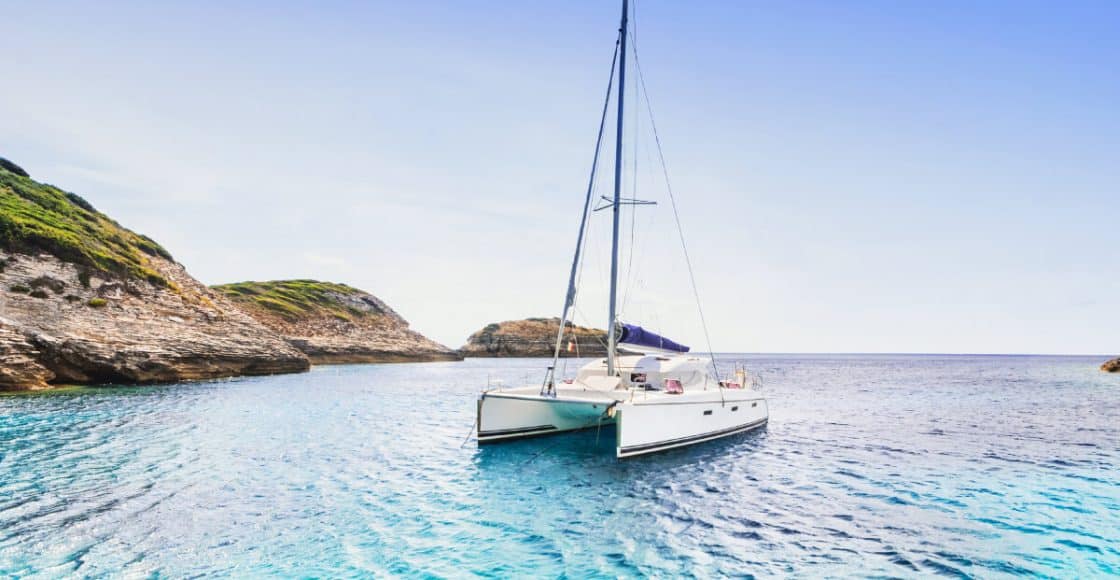
10 Best Catamarans for 2023

Table of Contents
Catamarans have taken the boating world by storm, becoming the fastest-growing segment, with both sail and power cats dominating the market. Some of the best catamarans have been launched in the past 12 months! Let us introduce you to five power catamarans and five sail multihulls, and then let us get you on the water with one! Here are the ten best catamarans for 2023 :
- World Cat 260 CCX
- Four Winns TH36
- Leopard 40 PC
- Aquila 42 PC
- HammerCat 45
- Fountaine Pajot Tanna 47
- Bali 4.4
Balance 442
- Minicat 310
Find the market’s hottest catamarans for half-day and full-day rent
Power Catamarans:
World cat 260 ccx.
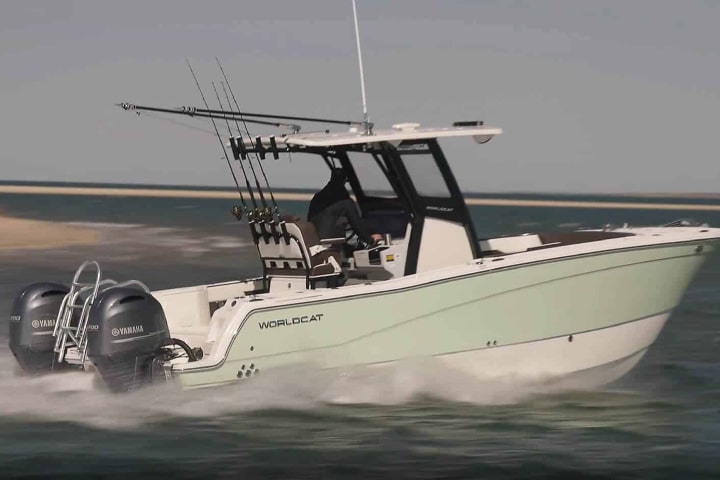
Image Source: https://worldcat.com/models/260cc-x/
The sixth model in the builder’s center console line , the World Cat 260 CCX , is compact but packed with features, including a wraparound U-lounge for relaxing or casting, a 30-gallon live well, a 120-quart insulated fish box and twin 200-hp outboards that draw on 180 gallons of fuel. This is a small but serious fishing machine.
Four Winns TH36
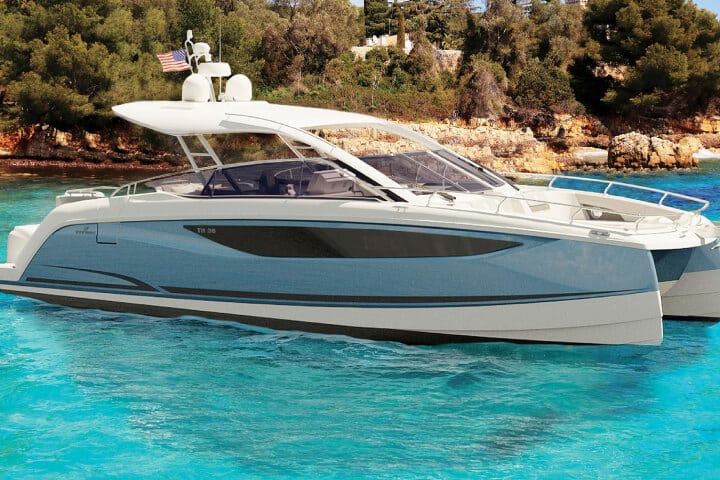
image source: https://www.fourwinns.com/new-era
The new Four Winns TH36 is the first outboard-powered catamaran introduced by the builder. The dual console design has a walkthrough windshield and room for 15 or more guests. Power is provided by twin 300-hp outboards upgradeable to 350s, making this runabout speedy and fun.
Leopard 40 PC
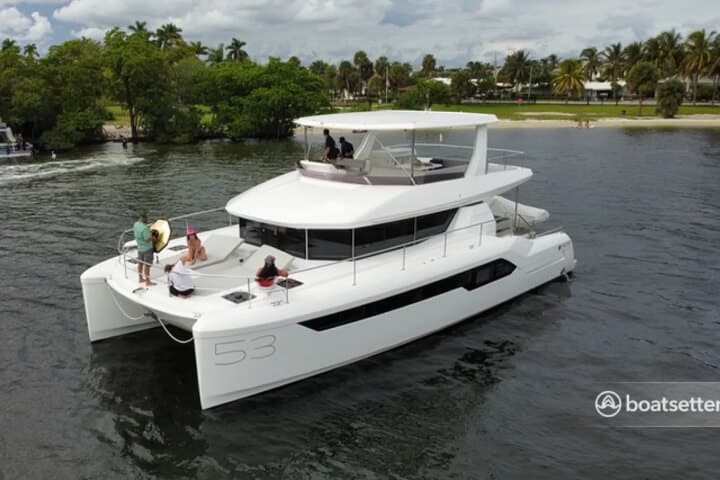
Joining her 46- and 53-foot siblings, the new Leopard 40 PC is a couple’s cruiser with many of the same features as the two larger models but on a much smaller (and for some, more approachable) platform. Engine packages range from 250 hp to 370 hp, and a top speed of 20 knots is expected.
Aquila 42 PC
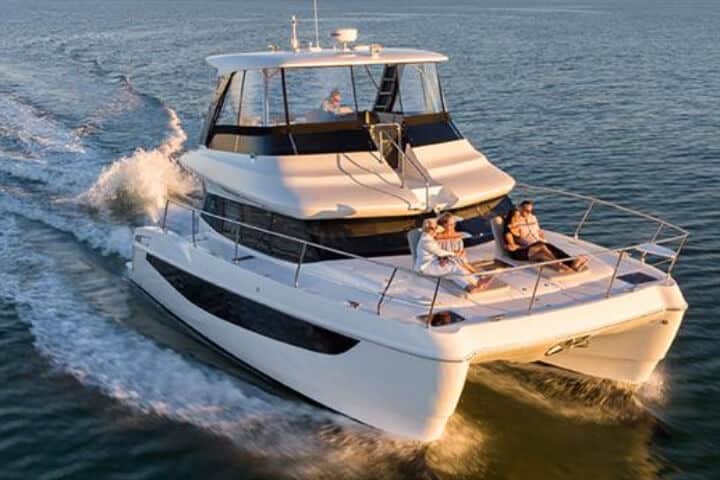
Image Source: https://www.aquilaboats.com/news/42-yacht
The new 42 falls in the middle of the Aquila range and offers two staterooms, multiple sunbeds, a utility cabin , and numerous layout configuration options. She has engines from Volvo Penta and a spacious flybridge with steps that lead directly down to the foredeck for easy maneuvering.
HammerCat 45
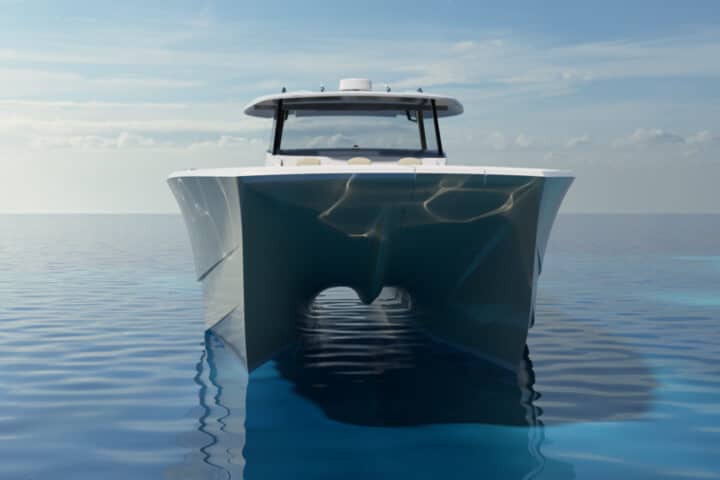
Image Source: https://www.multihulls-world.com/news-catamaran-trimaran/hammercat-45-an-almost-unlimited-program
The new HammerCat 45 is versatile and can work as a sportfish platform, a dive boat, a day cruiser, or a superyacht tender. This center console has a hardtop and a Carolina bow and is built in epoxy and carbon fiber to keep weight down and performance up. Expect a 55- knot top end and a 30-knot cruise depending on the engine package selected.
Sailing Catamarans:
Fountaine pajot tanna 47.
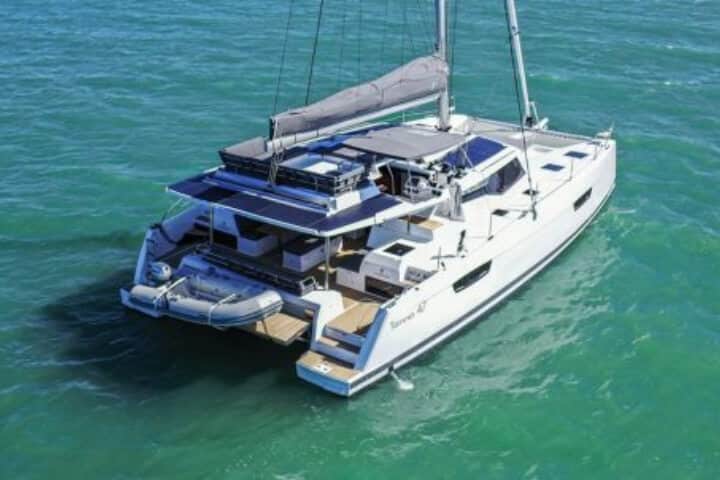
Image Source: https://www.catamarans-fountaine-pajot.com/en/sailing-catamarans/catamaran-tanna-47/
This French-built sailing cruiser has space in spades. The new FP Tanna 47 is based on (and shares a hull design with) her predecessor, the Saona 47, but clever tweaks have made this a whole new boat. The cabin house and deck have been revamped, the flybridge is 40% larger, the salon/ galley has gained storage options, and the helm is more ergonomic than before.
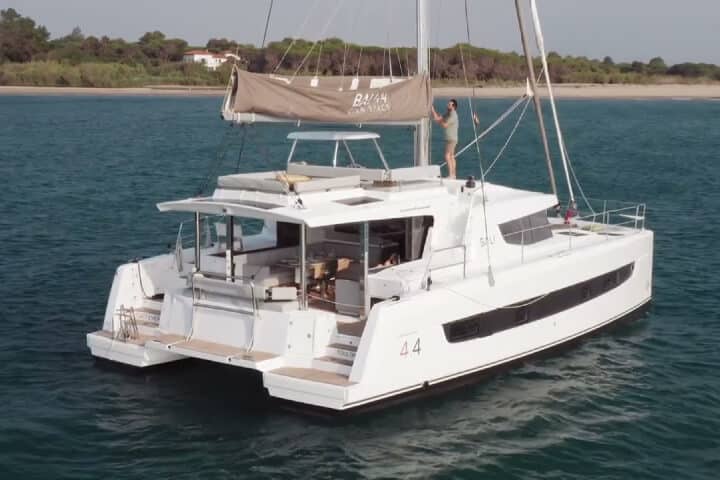
Video Source: bali-catamarans.com
Bali has captured the hearts of sailors who love lots of living space, large household-style appliances, and simplicity. Bali cats are unique for their combination salon/ cockpit layout, and the 4.4 joins her siblings in this groundbreaking design. With the touch of a button, a “garage door” lifts, connecting the indoors with the outdoors with minimum redundancy in living arrangements.
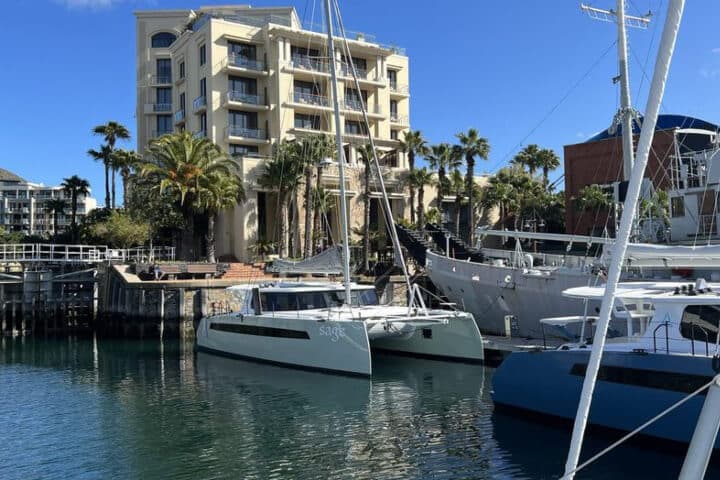
Image Source: https://balancecatamarans.com/balance-442/
Fast and packed with proven cruising features, the Balance 442 is the little sister to last year’s 482. Perfectly sized for couples, this boat was designed for distance cruisers by distance cruisers. There’s even an option for a large solar array to make living at anchor easy and just about carbon neutral.
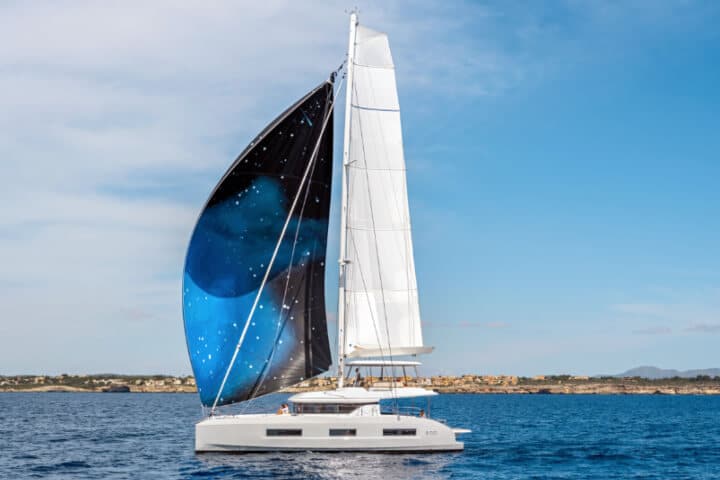
Image Source: https://www.cata-lagoon.com/en/55
French catamaran builder, Lagoon, has introduced a new VPLP-designed cruising cat that you can test in charter soon. The Lagoon 55 slots just above the newly introduced 51and are offered as a large and comfortable flybridge model with up to six cabins to accommodate an overnight crowd.
Minicat 310
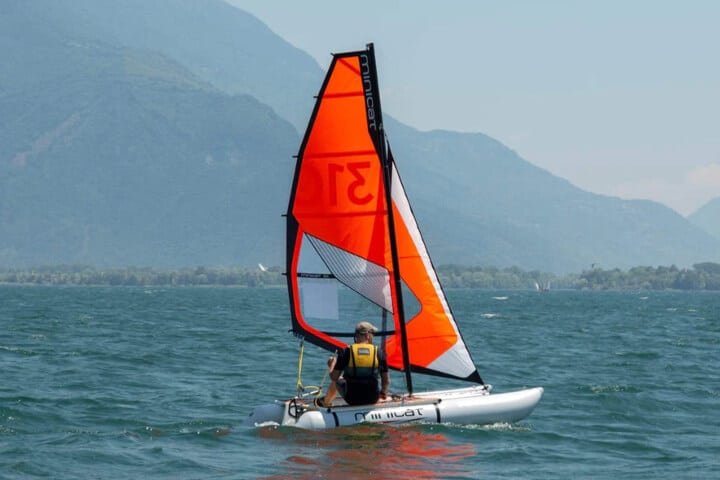
Image Source: https://redbeardsailing.com/products/minicat-310
Not all cats are of the large, expensive fiberglass variety. An affordable multihull can be had in Europe’s Minicat 310 Sport, an inflatable beach cat weighing only 77 pounds and packing down into a single bag. This cat has sophisticated big boat features like roller furling, a fully battened mainsail, keels, and an attachment for a small outboard.
Find catamarans for rent— NEAR YOU
These models, representing some of the best catamaran brands on the market today, are pretty new, so there aren’t many out there yet, but if you get a chance to step aboard one, you won’t be disappointed. One way to potentially test one is via a peer-to-peer boat-sharing service like Boatsetter that pairs owners, who can offset boat ownership costs, with charters, who can enjoy luxury boats without the long-term commitment.
Check out the hottest boats in the market at Boat Types , and scroll through Boat Guises to find your next boating destination . Keep your eyes peeled to catch one of these ten amazing catamarans on the water!
About Boatsetter
Boatsetter is a unique boat-sharing platform that gives everyone — whether you own a boat or you’re just renting — the chance to experience life on the water. You can list a boat , book a boat , or make money as a captain .
List. Rent. Earn— Only at Boatsetter

Zuzana Prochazka is an award-winning freelance journalist and photographer with regular contributions to more than a dozen sailing and powerboating magazines and online publications including Southern Boating, SEA, Latitudes & Attitudes and SAIL. She is SAIL magazines Charter Editor and the Executive Director of Boating Writers International. Zuzana serves as judge for SAIL’s Best Boats awards and for Europe’s Best of Boats in Berlin.
A USCG 100 Ton Master, Zuzana founded and manages a flotilla charter organization called Zescapes that takes guests adventure sailing at destinations worldwide.
Zuzana has lived in Europe, Africa and the United States and has traveled extensively in South America, the islands of the South Pacific and Mexico.
Browse by experience

Explore articles
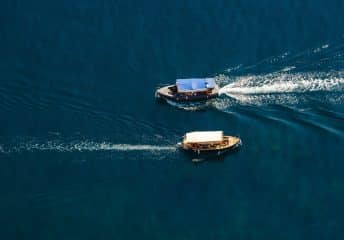
Boating Right of Way Rules: Understanding Meeting, Crossing, & Overtaking
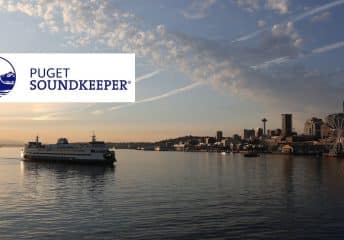
Puget Soundkeeper Creating Safe & Sound Seattle Waters | #MindYourWake Series
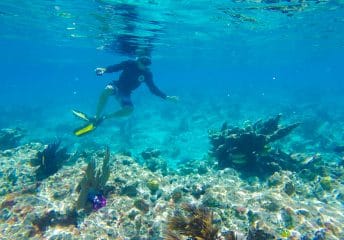
Your Tampa Bay Snorkeling Guide
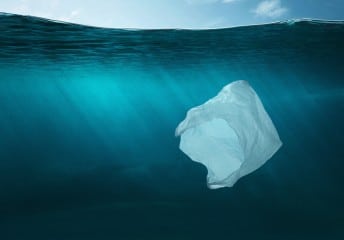
Boatsetter Teams up With Owners to Help Protect & Preserve Our Waterways
Last Updated on June 3, 2022 by Boatsetter Team

12 Best Catamaran Sailboats

Last Updated by
Daniel Wade
December 28, 2023
The appeal of the catamaran sailboats in terms of speed , stability, and the ability to embark on long-range cruising has made them hugely popular with today's sailors. But what are the best catamaran sailboats?
Even though catamaran sailboats have become increasingly popular in the last few years, they have a truly rich legacy as one of the most sought after vessels for bluewater cruising.
Thanks to their incredibly wide beams and bigger daft, catamarans have become remarkably favorable for sailors looking to go for long-distance voyages, overnight cruising, and day sailing.
And if space is paramount for you when out there on the water, a catamaran sailboat is the only way to go as they offer extraordinary space to allow you to spend more time on the water with friends and family.
But even with all these amazing features, you're probably still wondering; what are the best catamaran sailboats?
Like their monohull counterparts, choosing the best catamaran sailboat can be quite overwhelming since there are lots of them out there. They come in a wide variety of designs and sizes ranging from small catamarans to huge ones.
The best catamaran sailboats can easily clock 250-mile voyages, offer incredible performance, and have layouts that can be easily optimized for individuals, charter markets, and great accommodation. In essence, the best catamaran sailboats offer respectable performance and offer good load-carrying ability.
That being said, here are some of the best catamaran sailboats that you can get your hands on.
Table of contents
Best Catamarans
{{boat-info="/boats/manta-42"}}
Even though many multihulls are no longer built in the United States these days, the Manta 42 is a true American-built catamaran that brings good living and good value into one package. Designed cleverly for easy handling, this American built catamaran is a great choice for a liveaboard cruiser for sailors looking to go for long-distance voyages. Thanks to its trademark high bows and an enormously curved incorporated forward crossbeam, this catamaran is easily recognizable even from a distance.
It is designed with a uniquely fixed crossbeam, which is very different from conventional aluminum cross beams that support the tension of the forestay. This fixed crossbeam allows for a little bit of movement thereby helping in absorbing enormous twisting forces of the bows. As such, you have to keep in mind that there may be resultant stress crack particularly in the bow area of the vessel.
All in all, the Manta 42 is a superb offshore cruising catamaran that offers a good sail-area-to-displacement ratio as well as plenty of space and accommodation. The cockpit area is refined, luxurious, and is designed with additional stainless pushpit contraptions to help in holding objects such as wind vanes, dinghies, and solar panels. The boat's quality in terms of performance and stability is the benchmark of what a catamaran should be.
Fountaine Pajot Elba 45
{{boat-info="/boats/fountaine-pajot-elba-45"}}
Recently named the "Boat of the Year" for 2019 by Cruising World Magazine and Sail Magazine, the Elba 45 is the latest model in the incredible line of Fountaine Pajot catamarans. This boat was designed to replace the outgoing Helia 44 and stands to be one of the most popular catamarans with Fountain Pajot having sold over 100 Elba 45 hulls long before even the first one emerged from production.
This French-built cat brings to the fore a well-thought-out, safe, and dependable features with 10% less drag, efficient motoring, top-notch performance, and high speeds. It's also designed with fixed stub keels and slightly aft-raked bows, which are all essential in enhancing windward performance; something that most catamarans struggle with.
To improve on safety, the keels of this amazing catamaran sailboat are glued into a particularly designed recess in the hulls. This is to ensure that there are no keel bolts that can rip out and put the boat in danger if the boat gets grounded or in the event of a collision. The rig is also ICW friendly and is a true representation of a standard catamaran setup.
This is, without a doubt, a modern-looking cruising catamaran that has a low-profile lounging space on its deck, high topsides and bows as well as a more pronounced reverse sheer that's essential in minimizing the bulk of the windows while creating additional and useful volume below. This is a true catamaran that occupies a sweet spot for those looking to sail along the bay or for those adventurous sailors looking to set sail for more ambitious offshore cruising plans.
{{boat-info="/boats/leopard-48"}}
With its fine design, straightforward systems, and easy handling, the Leopard 48 has everything it needs to be ranked among the distinguished category of the best catamaran sailboats. This is an excellent multihull that is structured with advanced materials, designs, and innovations that are meant to be fun, spacious, and comfortable.
Designed in South Africa by Simonis-Voogd, is probably the best design in the Leopard family of catamarans. Its two hulls are vacuum-bagged using balsa core to offer maximum firmness while ensuring that the weight is on the minimum. This is done by articulately regulating the level of resin in the layup. With such types of hull shapes, this catamaran sailboat is very fast and can consistently clock 12 knots of speed against the currents.
The boat is also designed with shallow keels as they're filled with closed-cell polyurethane foam that's of great importance in increasing buoyancy and preventing water ingress. To enhance the safety of the vessel, the stern and bow both have bulkheads that are essential in keeping out that water if the sailboat is involved in a collision.
The hulls of this boat are deep and narrow, particularly below the waterline. They also curve higher up to practically reduce the wetted surface area while offering enough deck space and plenty of room for accommodations. Its cockpit is another excellent feature thanks to its lavish spaces that give you the chance of kicking back and relaxing.
This boat is designed to offer superior livability, quick and easy to handle features, as well as enough space for friends and family. It is designed with beautiful lines and immense practicality for those who want to go on long cruising voyages.
Antares 44i
While many people often believe that voluminous cruising catamarans should be used as charter boats, the Antares 44i brings a very different perspective altogether. Designed in Argentina as a complete bluewater catamaran, this is a boat that's specifically built for private boat owners looking for a sturdy and well-equipped bluewater cruiser. This is an absolutely gorgeous catamaran that has a fully-equipped cockpit just to ensure that you can safely operate it even when shorthanded.
Like most catamarans, the Antares 44i is designed with features that allow for long-distance voyages. It comes with a minimum bridge deck clearance of 30 inches, which is essential in mitigating bridge deck slap. The helm station is designed to offer excellent visibility over the coach roof without having to perch the helmsman high above the cockpit.
If you're planning to make those long-distance cruising to exotic places, you'll appreciate this boat's layout. The galley is put down in the port hull so that it doesn't compromise the size of the galley and the saloon. The forward-facing navigation station is up there with the best and is up to offshore standards. And that's not all; the Antares 44i comes with good mounting points for electronics, a large table, comfortable seats, and provides brilliant visibility outside.
This boat is perfectly suited for extended offshore cruising and is a great reminder for anyone who thinks that all catamarans are charter boats and all offshore boats are monohulls.
{{boat-info="/boats/dolphin-ocema-42"}}
Designed by Philipe Pouvreau in northern Brazil, the Dolphin Ocema 42 is a truly unique catamaran sailboat that goes against the conventional norm of catamarans. It is equipped with daggerboards, which are essential in enabling it to point higher on the wind while reducing the wetted surface when running or anchoring in shallow surfaces. This, however, requires a higher level of expertise in sailing. This is because lifting the daggerboards higher up will expose the rudders while the daggerboards can also interfere with the hulls in the event that the vessel runs aground.
But even with that, the Dolphin 42 balances incredible performance and cruising comfort in a very compact package; something that is not very easy in bluewater cruising. That's why it's designed using a foam core to make it lightweight by reducing weight wherever possible. This vessel will most likely never let you down if you want to circumnavigate the bluewater on a high-performance boat that is safe and comfortable.
So if you've been looking for a real sailing catamaran that doubles up as a very comfortable liveaboard sailboat , look no further than the Dolphin 42.
{{boat-info="/boats/catana-50"}}
Regarded as the best built and most stylish cruising multihull, the Catana 50 is a very huge catamaran sailboat. Measuring about 50 feet long with a beam of about 26 feet, this is an amazing catamaran that will test your sailing skills as a single sailor or if you're planning to sail shorthanded.
This boat is designed with a rig that gives you the option of using either a screecher or a self-tending jib. This may seem complex since the sheets are led to winches near each wheel while all other controls lead to a centerline winch that's located in the cockpit. But even with that, this sailboat can be easily tacked once on the course.
This is a real performance-oriented catamaran with efficient hulls and rigs allowing for top speed. This vessel is also designed with a long waterline and a subtle underwater shape at the bow to help in increasing volume while minimizing wave drag. The stern platforms can help in stretching the waterline length while also providing easy access from a dock or a dinghy. The board trunks are also very strong and sturdy to protect the integrity of the hulls if a collision occurs.
In essence, this is a very modern catamaran that's designed to safely make long-distance passages with ease. It is subdued in terms of styling but this doesn't mean that it falls short as far as performance is concerned.
Atlantic 42
{{boat-info="/boats/atlantic-42"}}
Designed in 1993, the A42 has cultivated a legion of fiercely loyal fans thanks to its efficiency and aesthetic. This is the smallest of the Atlantic cruising catamaran line and is hugely popular with sailors thanks to its ease of handling, ocean-going capabilities, and superb use of space. From the forward cockpit, pilothouse to the sleeping cabins, and brilliant galleys everything about this cat is a true classic.
Unlike most catamarans, the Atlantic 42 is designed with a waist-high cockpit that's located forward of the pilothouse just behind the mast. It brings forth a solid construction thanks to the large metal girder-like bearers that run across the bulkheads. This helps the vessel in having the utmost strength, better air circulation under the engine, and a high level of flexibility as far as the size of the engine and its positioning is concerned.
Initially, the boat's style and its outlook were considered conservative but it soon became clear that it is built of high-quality materials and to last. The internal construction of the boat is impressive, to say the least. The exterior looks very beautiful and perhaps much more beautiful than most boats today. Its large aft cabin accommodation is a top drawer while the space separating en suite heads and shower compartments are considered a bonus.
{{boat-info="/boats/fountaine-pajot-bahia-46"}}
If you were to board the French-built Fountaine Pajot Bahia 46, you'll agree that the high-quality of workmanship, layout, and efficient use of space is quite exciting, to say the least. This cat remains very popular among sailors thanks to its easy handling features and incredible performance under the sails. Well, this may not come as a surprise to many of us given that the Fountain Pajot is known for building some of the most remarkable cruising catamarans out there that it can be quite overwhelming to narrow down to a single vessel, but the Bahia 46 simply stands out.
This vessel is designed with hulls that are broader than those of many other catamarans. It's also designed with centerboards and daggerboards that are meant to enhance its performance. These are essential in minimizing draft while ensuring reliability, generous bilge, and in helping to protect the rudders and propellers.
This boat is big enough to manage any type of serious offshore sailing. This is one of the best cruising catamarans for anyone looking for the right vessel for long-distance sailing. This vessel has a very more generous rig than most cruising catamarans, which is essential in enhancing its performance. The six-post Bimini is very strong and clean and can perfectly hold dinghies.
In terms of its look, the Bahia 36 is designed with gorgeous lines with the deck and hulls sculpted with lines that add a touch of elegance to the overall look of an already excellent catamaran sailboat.
Gemini 105MC
{{boat-info="/boats/gemini-105mc"}}
Whether you're looking for a comfortable catamaran vessel to take you for a weekend sailing trip or a long sabbatical vacation on the oceans, the Gemini 105MC is a very satisfactory liveaboard catamaran vessel that offers spacious accommodation, thoughtful design, and a stable cruising platform for anyone who wants to have some good time on the water.
Designed by the legendary Tony Smith, this is somewhat a sailing cottage. Like a land cottage, it is cozy, comfortable, and very safe. This is essentially a 35 feet catamaran that offers great value for any sailing looking for a reasonably-priced catamaran sailboat for the weekend or holiday cruising.
This boat is designed with incredibly slim hulls, which are teardrop-shaped with flat bottoms and smaller wetted surface area. This is to ensure that drag is minimized and to lead to more leeway under sail. Each of the boat's hull is designed with a kick-up centerboard is of great importance in enhancing the vessel's windward pointing capability. This boat also has its rudders raised to enable it to seamlessly cruise in shallow waters where most vessels would otherwise run aground.
The eccentric narrow beam, which measures about 40% of the boat's length, is very different from today's 50%. However, its low center helps in keeping its stable, upright, and of course, safe.
Lagoon 450 F
{{boat-info="/boats/lagoon-450-f"}}
If you're looking for a catamaran sailboat that offers prestige at its peak, look no further than the Lagoon 450. This cat is widely known for offering an all-around comfort without compromising its beauty, spaciousness, class, and elegance. This is an elaborate French catamaran that brings to the table fantastic craftsmanship while leaving nothing to chance.
This is a very safe 45 feet catamaran that's not just comfortable but also very luxurious. The deck layout is centered on an amazing flybridge, which has been redesigned and redefined to offer both the traditional and modern outlook. You can very easily access the bridge, engine controls, steering station in a matter of seconds. As a result, this boat is efficiently designed to give you the ultimate control of almost every situation while on the water.
The spacious and luxurious interior of this boat is worth experiencing. The cabins and saloons are perfectly lit. We're talking about four to six cabins, eight to twelve berths, and up to four bathrooms. In essence, this boat can comfortably sleep eight to twelve people. This boat is designed to offer ultra-modern accommodations and amenities that come with little but amazing touches; all designed to make your life inside the catamaran enjoyable.
{{boat-info="/boats/gunboat-62"}}
An original performance catamaran cruiser from the iconic Gunboat manufacturer, the Gunboat 62 has truly cemented its place as one of the best catamaran sailboats to ever grace the oceans. Honestly speaking, this cat-inspired a whole range of other incredible boats including HH66 Catamaran and the Balance 526.
This is a boat that can perform admirably well in storms with a speed of over 35 knots despite being built using epoxy and E-glass with carbon-fiber structural components. It's designed with a distinct angular outline than most catamaran sailboats of its size and category. This is a vessel that was built for people looking to add more stuff and more gear for their voyages. In other words, you can have all the gear and equipment on this boat and still outperform a racing monohull of the same size.
Thanks to its lightweight feature, this vessel can sail upwind at speeds of over 17 knots and pinch up to 30 degrees. Just for comparison, the Gunboat 62 can tack through 95 degrees and still outperform the best racing monohulls. This boat is designed with a comfortable helm seat that offers 360-degree visibility as well as plenty of storage space, a functional working surface, and a luxurious cabin. Like many performance catamarans, the Gunboat 62 can attain about 20 knots if the conditions are right.
Privilege 615
{{boat-info="/boats/privilege-615"}}
Combining elegance, comfort, and style, the Privilege 615 is a lovely catamaran sailboat that seems to be always ready for a long offshore voyage. The roots of this incredible cat can be traced back to the 1980s when Philippe Jeantot opened up a boat-building company in France. As one of the best productions from the company, the privilege 615 sports a flybridge that comes complete with twin wheels, a sprawling sunbed, and other excellent features that will make your bluewater cruising a breeze.
Whether you want the charter version or a privately-owned version, the Privilege 615 is one of the most versatile catamaran sailboats. Step inside this vessel and you'll instantly notice the quality of the wood finish and the elegance of design. The advanced navigation station is not only ultra-modern but is perfectly stationed at a dedicated corner where you can control everything while still having a conversation with your friends and family.
This boat comes with multiple sleeping configurations to ensure that you and your guests can live aboard the boat for months on end. Although the boat appears like some sort of maze on the inside, you'll easily get used to it when you enter the forward section. That's not all; this boat has gorgeous lines that make the exterior beautiful just like the interior. Its sleek profile, incredible volume, and versatile interior make it one of the best catamaran sailboats out there.
There you have it; these are the best catamaran sailboats out there. It doesn't matter the one you choose, these cats will make your day out on the water and will serve you just right for your offshore voyages or for day sailing along the bays.
Related Articles
I've personally had thousands of questions about sailing and sailboats over the years. As I learn and experience sailing, and the community, I share the answers that work and make sense to me, here on Life of Sailing.
by this author
Best Sailboats
Most Recent

What Does "Sailing By The Lee" Mean?
October 3, 2023

The Best Sailing Schools And Programs: Reviews & Ratings
September 26, 2023
Important Legal Info
Lifeofsailing.com is a participant in the Amazon Services LLC Associates Program, an affiliate advertising program designed to provide a means for sites to earn advertising fees by advertising and linking to Amazon. This site also participates in other affiliate programs and is compensated for referring traffic and business to these companies.
Similar Posts

Affordable Sailboats You Can Build at Home
September 13, 2023

Best Small Sailboats With Standing Headroom

Best Bluewater Sailboats Under $50K
Popular posts.

Best Liveaboard Catamaran Sailboats

Can a Novice Sail Around the World?
Elizabeth O'Malley
June 15, 2022

4 Best Electric Outboard Motors

How Long Did It Take The Vikings To Sail To England?

10 Best Sailboat Brands (And Why)
December 20, 2023

7 Best Places To Liveaboard A Sailboat
Get the best sailing content.
Top Rated Posts
Lifeofsailing.com is a participant in the Amazon Services LLC Associates Program, an affiliate advertising program designed to provide a means for sites to earn advertising fees by advertising and linking to Amazon. This site also participates in other affiliate programs and is compensated for referring traffic and business to these companies. (866) 342-SAIL
© 2024 Life of Sailing Email: [email protected] Address: 11816 Inwood Rd #3024 Dallas, TX 75244 Disclaimer Privacy Policy
- 2024 BOAT BUYERS GUIDE
- Email Newsletters
- Boat of the Year
- 2024 Freshwater Boat and Gear Buyers Guide
- 2024 Boat Buyers Guide
- 2024 Water Sports Boat Buyers Guide
- 2023 Pontoon Boat Buyers Guide
- Cruising Boats
- Pontoon Boats
- Fishing Boats
- Personal Watercraft
- Water Sports
- Boat Walkthroughs
- What To Look For
- Watersports Favorites Spring 2022
- Boating Lab
- Boating Safety

Catamaran Versus V-Hull: Which Rides Better?
- By Kevin Falvey
- Updated: December 2, 2004
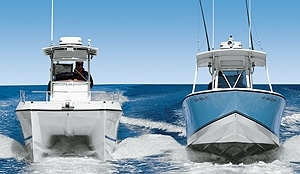
The controversy rages in dockside watering holes, tackle shops, and Internet chat rooms: Which rides better-a catamaran or a V-hull? So far, all the talk has been purely subjective: A cat feels like this, a V-hull feels like that. To us, that’s useless. At Boating Magazine, we need hard numbers, things that we can quantify, then we’ll decide. So we took a Regulator 26, which just might be the best-riding V-hull for its size, and a Glacier Bay 260 Canyon Runner, one of the best-riding cats, and wired them with expensive sensing gear. Rather than a match between two specific boats, it would be a comparison of the finest qualities of each type. We expected the cat to be smoother when the going got rough, but what about the other times? Is it the most comfortable all-around boat? It took us a year-that’s right, one full year-to compile and understand the data, but here, finally, is the answer.
Measured Madness Our first problem was how to quantify a boat’s motion underway. The best tool we came up with is an accelerometer, which records changes and degrees of motion. We also had electronic gear to measure the boats’ angles, WAAS-enabled GPS units, rangefinders to measure distances, four laptops, stopwatches, plumb bobs, measuring tapes, and eventually, a collection of soggy notebooks.
To help us make sense of what we compiled, and back up our conclusions, we enlisted two top naval architects. So we’d like to thank Rick Strand, president of Strand Technologies, a consultant to companies such as Tillotson-Pearson, Boston Whaler, and Brunswick; and John H. Deknatel, president of the legendary design firm C. Raymond Hunt Associates.
With their help, the evidence became clear. What we discovered should silence the know-it-alls and may surprise the enlightened. Without question, we’ve killed the controversy. The boat type with the most comfortable ride is…
Not so fast-to understand our answer, you need to know how we approached the question.
Three Easy Pieces First, we wanted to measure how differently cats and V-hulls turn. To do this, we set up a buoy and had each boat make the tightest 180-degree turn it could at 30 mph. The diameter of each boat’s turn was about the same, although the V-hull averaged 8.4 seconds compared to the cat’s 8.9 seconds. The important difference, however, was how each banked in the turn.
Our electronic angle indicator showed the cat leaning outward by 26 degrees. The unit may have been over-reading due to outward force, but none of the techies from the indicator’s company could confirm this and they therefore stand by its number. By any measure, the cat did lean outward at a steep angle, which can be disconcerting to say the least. Loose gear slides more when a boat leans opposite the turn, and the push that occurs at the apex can make you feel as if you’re going to be thrown out. Of course, with time, you can get used to this. Furthermore, the lean can be minimized by trimming up the outboard engine and trimming down the inboard.
In contrast, the V-hull banked inward by 10 degrees. This not only feels natural, it also has a practical advantage. Centrifugal force pins you and your deck gear into the boat, and you need no special trimming techniques-just turn the wheel.
Both boats are designed for fishing, so our second test was to see how each fared while drifting.
To start, we measured each boat’s roll period-how long it takes to roll all the way to one side and back again. Too short a roll period foretells a jerky motion at sea, too long may mean there’s not enough initial stability. The cat’s period was 2.2 seconds. The V-hull’s was 2.4 seconds, almost 10 percent slower-which in this case is good.
Given our experience with a cat’s less-than-gentle motion at drift, we expected its period to be a lot shorter than the V-hull’s. In hopes of explaining this, we headed out into the ocean.
After the two boats took their natural drift angle in four-foot waves, we looked at the mean G forces each experienced. The cat showed 0.92 Gs, and the V-hull showed 1.18 Gs. So the cat is more comfortable, right?
Not quite. On average, it took the cat 1.15 seconds to reach those Gs, whereas it took the V-hull a little longer at 1.17 seconds. That is, the V-hull accelerated 2 percent slower than the cat. And, as we’ll get into later, slower accelerations equal more comfort.
The results from the accelerometer confirm our roll period tests. The cat, with its greater initial stability, resists rolling. When you stand on its rail at the dock, you notice it hardly leans at all. Most folks think this stability makes for a better boat offshore. But that same resistance to listing at the dock causes a cat to follow the contour of the waves while drifting. The steeper the wave face, the more the cat leans over.
The V-hull has less initial stability, so it gives a bit to your weight at the dock-and to oncoming waves. Its ability to roll easier means it’s not forced to follow the contour of the wave. Instead, as a wave approaches, the boat leans toward it, levels out at the crest, and then leans back into the retreating wave on the way down. In this way, it’s trying to remain level, rather than trying to conform to the angle of the water it’s floating in.
Our third test was to see how smooth each boat ran on a “perfect” boating day, one with a small one-to-two-foot chop on an open bay and a 10-mph breeze. We ran the boats side by side, and the differences shown on the accelerometer were negligible.
So far, after three tests, the V-hull had come out on top in two, and both boats were about equal in one.
We Take It Outside “But what about how they ride when it’s rough?” we hear you ask. “That’s what we really want to know.” And we plan to tell you. But our contention is that there’s more to boating-and enjoying it-than this one element. Unfortunately, and unfairly, bar talk often centers around this, so here we go.
We chose a day when the waves were four to five feet with a six-second period-your typical “rough day.” We ran the boats 100 feet apart at 29 mph directly into the waves. It didn’t matter which boat we were in, it was uncomfortable. Anyone but a masochist would slow down or change course, but we’re here for science.
The graphs on page 86 (see “Graphic Violence”) represent the two boats hitting the same wave. Sharp readers will note that the impacts shown for the two do not exactly coincide. The time each boat hits a wave varies, and a given wave isn’t consistent in shape over its length. Since the boats couldn’t be tied abreast of each other, this is the best anyone can do.
We made numerous runs. For statistical accuracy, we examined seven individual waves for each boat and on each run.
Before giving you the numbers, let’s just say that our accelerometer numbers are dead accurate. But on test day the time between entering a wave, bottoming out, and leaving the wave occurred in less than 0.3 seconds-which is not uncommon. According to Deknatel, “That’s too short a time for your body and brain to process the full effect of the event.” The accelerometer, however, is capable of measuring what we can’t feel.
To accurately compare the ride for a real human, not the machine, you need to look at more than just the peaks of the graph (maximum G force). You need to look at the steepness of the graph’s slope (the time it takes to reach that force), too. A boat that develops more Gs doesn’t necessarily mean it has a harsher ride. It depends on how fast that force is applied. For example, if your 250-pound buddy gently leans on you, what you feel is different than if he were to hit you with a running tackle.
The curve for the cat peaks at 3 Gs; the V-hull, on the other hand, peaks at 4, meaning the cat has 25 percent less gravitational force.
We can also see that the cat consistently decelerated slower when it hit the wave than the V-hull did. It had an average deceleration of 0.287 seconds, compared to the V-hull’s 0.081 seconds-which is 3.5 times faster.
The cat not only landed with less force, it decelerated slower as well. The two combined say it has the more comfortable head-sea ride.
Our test day was rough, so much so that our testers were hard-pressed to say from their gut which rode softer. But, again, the machine is more sensitive than any human, and numbers don’t lie: The cat’s numbers were clearly better.
Later tests also showed the cat delivered lower Gs and slower decelerations while running downsea, in quartering seas, and in the trough. So it’s the most comfortable boat right? Well, not so fast.
Rough Guide We weren’t through testing yet-although some tests were hardly high science.
For example, to see how wet riding each hull was, we taped paper towels to the front of the console. Cats often “sneeze,” or throw a fine mist on certain headings. In this case, and even in the test day’s rough conditions, both sets of towels came back dry.
Then there were issues we couldn’t quantify, such as how a V-hull can dig in its bow going downsea to occasionally make steering difficult, or how in quartering seas a cat’s two hulls catch at different times, requiring constant small steering adjustments.
And there were things that we didn’t have time to test, such as the effect of weight. Typically, a V-hull rides better as it gets loaded down with gear and fuel, which is just the opposite of a cat. Also, our offshore tests were on closely spaced waves. On widely spaced rollers, where boats become airborne, the results would have been different.
In the end, for many boaters, especially those who seem to spend more time in gin mills and chat rooms than on the water, ride quality simply means how softly a boat handles head seas. By that standard, as measured by our accelerometers, and in our test conditions, the cat was the clear winner.
But ask yourself, how often do you go out in weather like that? To make the results of our tests worthwhile for you, ask yourself, “Which boat rides better in the conditions I expect to meet?”
For example, if you have to run far and fast to get to an offshore fishing ground, the cat is a better choice. If you fish close to home, and drift or troll more than flat-out running, the V-hull would be better.
Take all our tests into consideration, and the boat you buy will be the right boat-your Mr. Smoothie.
- More: Boats , express fishing , Fishing Boats , glacier bay catamarans , multipurpose , versus
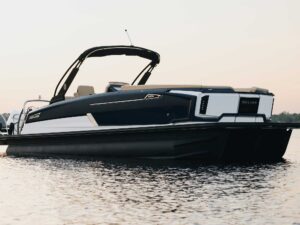
Balise Pontoon Boats Launches

Center-Console vs. Bowrider

Boating On Board: 2024 Sea-Doo Switch Cruise Limited

Twin Vee Debuts New GFX2 Line of Power Catamarans

I Learned About Boating From This: Should We Stay or Should We Go?

Base-Layer Shirts for Boaters

Considerations for Bringing Dogs On Board

- Digital Edition
- Customer Service
- Privacy Policy
- Cruising World
- Sailing World
- Salt Water Sportsman
- Sport Fishing
- Wakeboarding
Many products featured on this site were editorially chosen. Boating may receive financial compensation for products purchased through this site.
Copyright © 2024 Boating Firecrown . All rights reserved. Reproduction in whole or in part without permission is prohibited.

IMAGES
VIDEO
COMMENTS
Backing into a slip is easier on a catamaran than a monohull. To back into a slip (which will make it more convenient for crew to step on and off) pull up until perpendicular with the slip, pivot the boat with the engines and then use both in reverse, adjusting as you back up if there is a beam wind.
In deciding between a sailboat and catamaran, there are several considerations to keep in mind. A catamaran is easier to sail and will provide a more spacious and luxurious experience. The sailboat, on the other hand, is more immersed in the water and provides a more realistic and exciting experience. It can be challenging knowing which boat is ...
A Formula 16 beachable catamaran Powered catamaran passenger ferry at Salem, Massachusetts, United States. A catamaran (/ ˌ k æ t ə m ə ˈ r æ n /) (informally, a "cat") is a watercraft with two parallel hulls of equal size. The distance between a catamaran's hulls imparts resistance to rolling and overturning. Catamarans typically have less hull volume, smaller displacement, and ...
A catamaran is a twin-hull boat with two equally-sized hulls placed side by side. They're powered by engines, sails, or both—and they're known for efficiency and speed. Catamarans are the most common kind of multihull boat. In this article, we'll go over the characteristics of catamarans and how to differentiate them from other types of ...
The catamaran will move around with the wind, always staying flat, while the sailboat will rock from side to side and might even get you seasick. This is especially noticeable when the wind is opposing the waves, making the boat have the wind pushing it from one side and the waves banging it from the other side.
Some people think of any multihull boat as a catamaran, but in strict terms a catamaran is a boat with two hulls. A boat with one hull is a monohull and a boat with three hulls is a trimaran. Pontoon boats can be either catamarans or trimarans (sometimes called tri-toons), but can be differentiated from most other multihulls in that their hulls ...
Jul 30, 2018. Original: Aug 17, 2015. Two sailboat experts argue monohull vs. catamaran. Contributed by Denison Yacht Sales. The great debate over which is better—one or two hulls—boils down to several factors, each with distinct advantages and disadvantages. The verdict usually defaults to personal preference and intended use of the vessel ...
ADVANTAGES OF A CATAMARAN. 1. Speed Equals Safety. The speed of a catamaran makes it possible to outrun bad weather. While catamarans do not point as high into the wind as a monohull (or if it does, it makes more leeway or slides sideways), it is about 20% faster than a monohull.
Catamarans offer more outdoor fun. Overall Comfort - For stability, living accommodations, and seasickness reduction, catamarans are vastly more comfortable boats. So catamarans excel when it comes to providing generous living areas for group getaways and family vacations. But yachts are tailored more for couples charters and luxury amenities.
A catamaran is a design for a boat that utilizes two hulls. Due to the flat, platform-like-potential for the deck of the boat, the catamaran is often purposed with transporting materials, vehicles, and people. For instance, catamarans are quite often used as ferries.
A catamaran is much better than a monohull in many ways. Catamarans are more stable, faster, and spacious. They also offer safer anchorage and are easy to control. Monohulls are more maneuverable, have lower costs, and better when sailing upwind.
A catamaran rides on pair of hulls, or sponsons, each thinner and sharper than that of a similarly sized monohull boat. The narrow sponsons of the cat tend to slice easily through water to deliver a smooth ride, even in rough seas. At the same time, with the sponsons positioned out to the sides of the boat, cats tend to roll less, thus ...
Photo via World Cat Boats. World Cat is one of the most recognizable brands in the world of power catamarans — in fact, according to the company they're the largest producer of power catamarans in the world. Their line is a mix of center console and dual console fishing and family boats ranging from 23' to 40'.
A catamaran has more space than a monohull. This is because the boat is wider, and it has a much larger deck area. It also has twice as many hulls, so you have more overall space between the two of them. The additional space is great for people looking to throw parties on their boats.
Unlike a sailboat, a catamaran is practically unsinkable.However, from a physics point of view, it is easier to capsize a catamaran, although the probability of this happening is relatively low, and the boat stays afloat, providing a haven for the crew.. The limit of positive stability (or angle of vanishing stability), which can make the boat capsize, is considerably smaller in the case of a ...
Let us introduce you to five power catamarans and five sail multihulls, and then let us get you on the water with one! Here are the ten best catamarans for 2023: World Cat 260 CCX. Four Winns TH36. Leopard 40 PC. Aquila 42 PC. HammerCat 45. Fountaine Pajot Tanna 47. Bali 4.4.
Gunboat 62. gunboat_catamarans. An original performance catamaran cruiser from the iconic Gunboat manufacturer, the Gunboat 62 has truly cemented its place as one of the best catamaran sailboats to ever grace the oceans. Honestly speaking, this cat-inspired a whole range of other incredible boats including HH66 Catamaran and the Balance 526.
Catamaran boats for sale on YachtWorld are listed for a variety of prices from $48,499 on the relatively more affordable end, with costs up to $22,408,911 for the most extravagant model yachts. What Catamaran model is the best? Some of the most popular Catamaran models presently listed include: Diamond Yachts P55 Power Catamaran, 24, 270, Bamba ...
There are a wide range of Catamaran boats for sale from popular brands like Fountaine Pajot, Lagoon and Leopard with 481 new and 1,411 used and an average price of $558,626 with boats ranging from as little as $66,480 and $6,673,406.
The catamaran, on the left, features a wide living room that's popular with liveaboard owners. Leopard Catamarans + Sea Ray Boats Interior Accommodations - Salon. There's no getting away from the fact that a 22-foot-wide boat will have more space than one with a 13-foot beam, or so it should seem. But that isn't quite true.
We can also see that the cat consistently decelerated slower when it hit the wave than the V-hull did. It had an average deceleration of 0.287 seconds, compared to the V-hull's 0.081 seconds-which is 3.5 times faster. The cat not only landed with less force, it decelerated slower as well.
Catamaran boats. A sailing catamaran is a multihull vessel that is characterized by having two separate hulls, which are generally similar or identical in size. Because of their dual-hull design, they offer more space and will lay on the water like a raft, for less heeling when enjoying sailing on the open waters. ...
These powerboats use the following propulsion options: outboard engine. There are a wide range of Power Catamaran boats for sale from popular brands like World Cat, Twin Vee and Aquila with 559 new and 648 used and an average price of $465,640 with boats ranging from as little as $19,585 and $7,261,750.